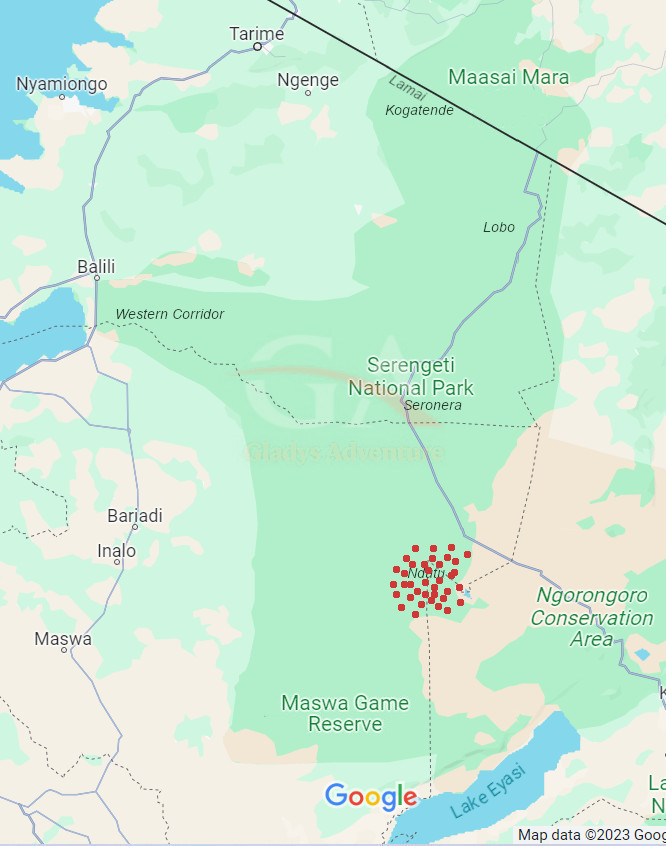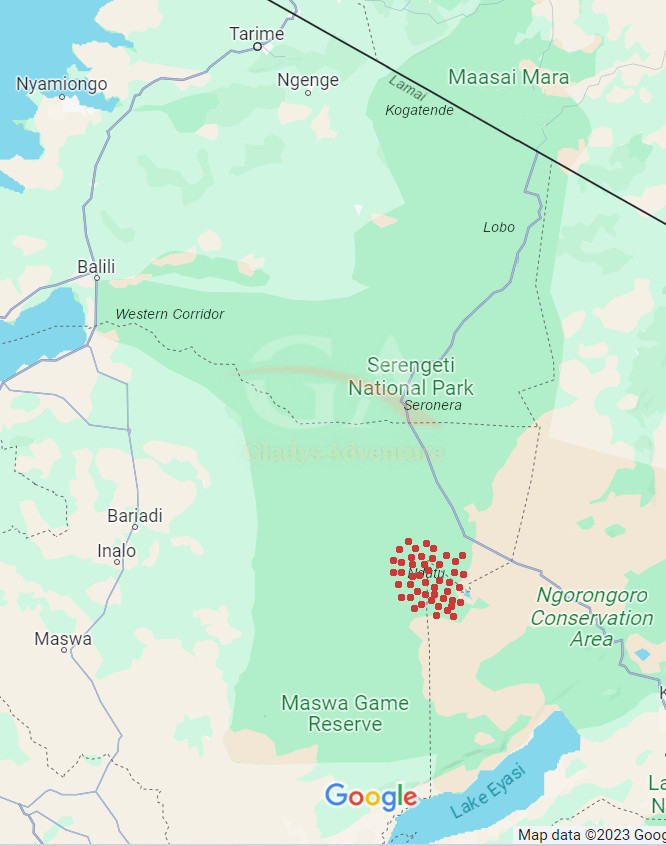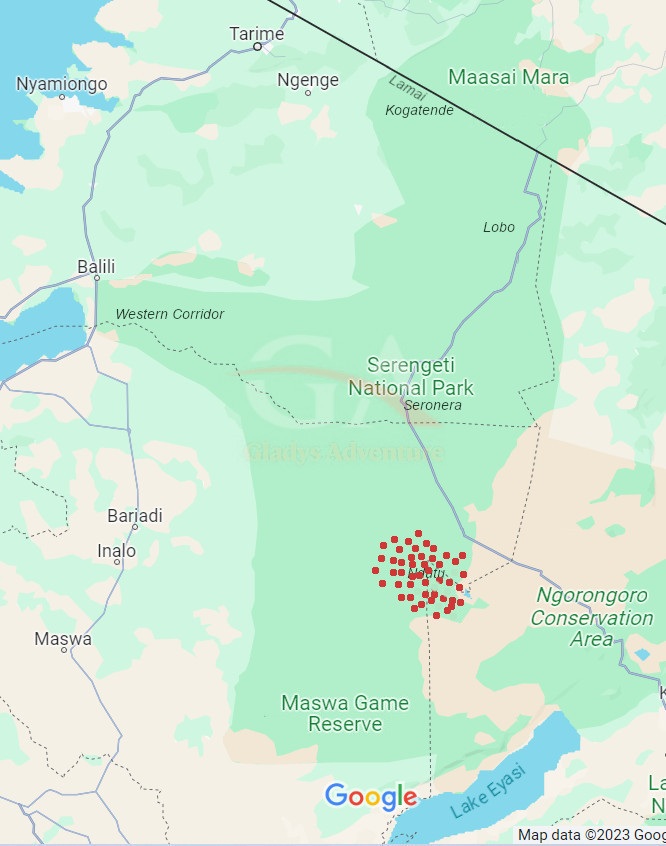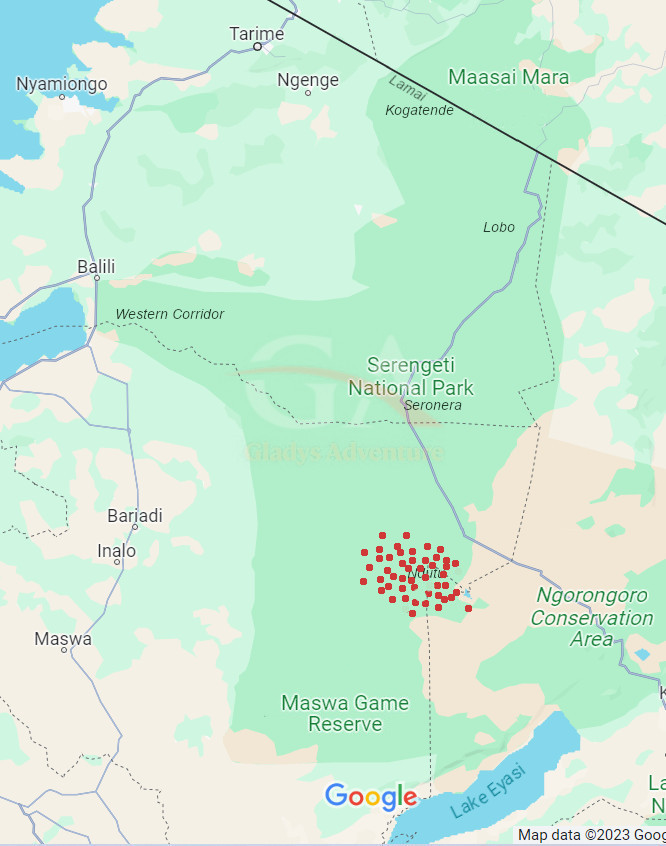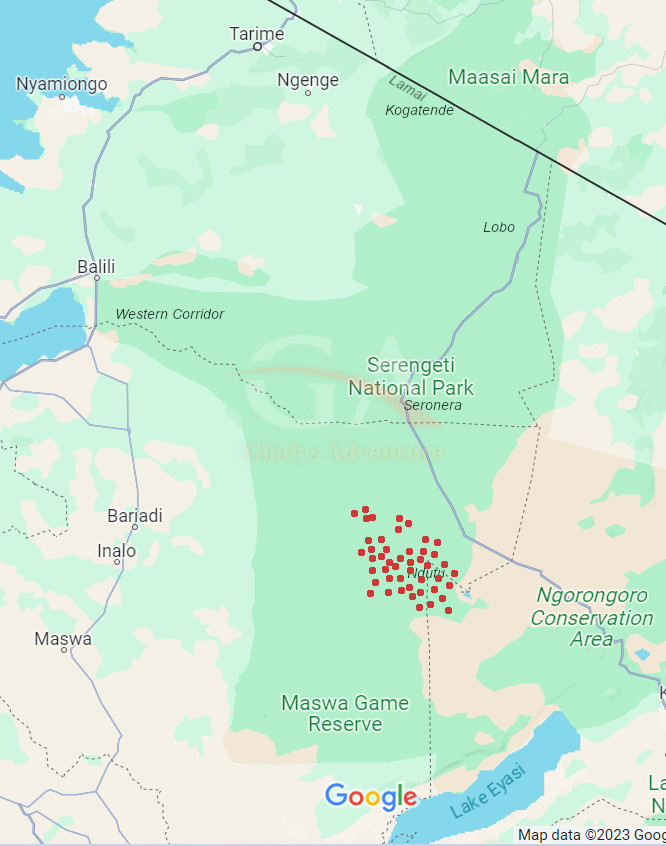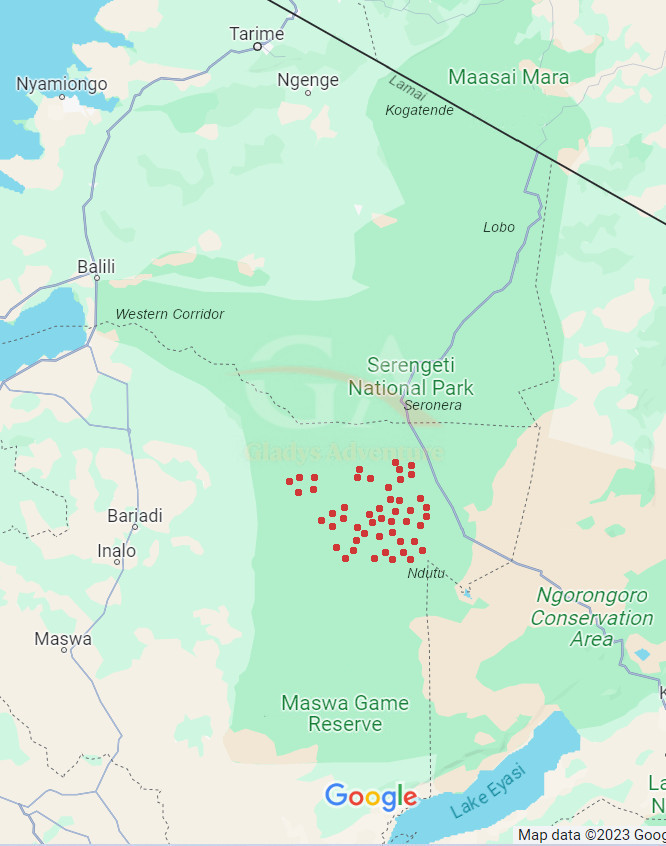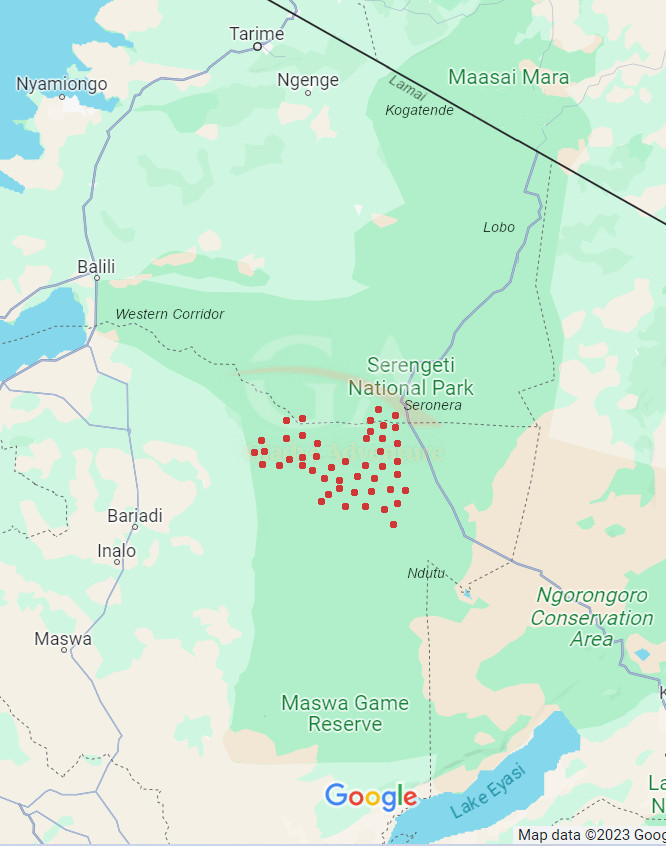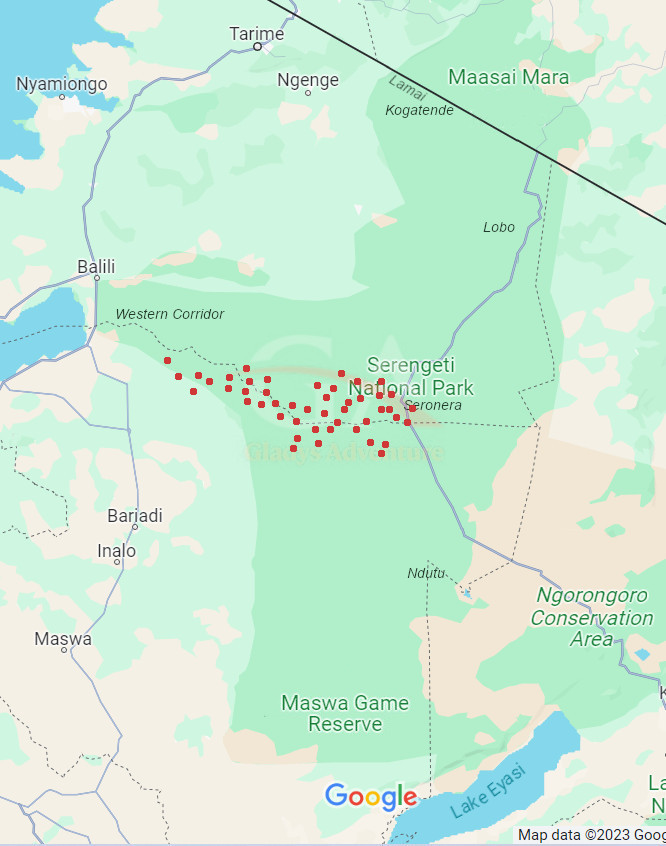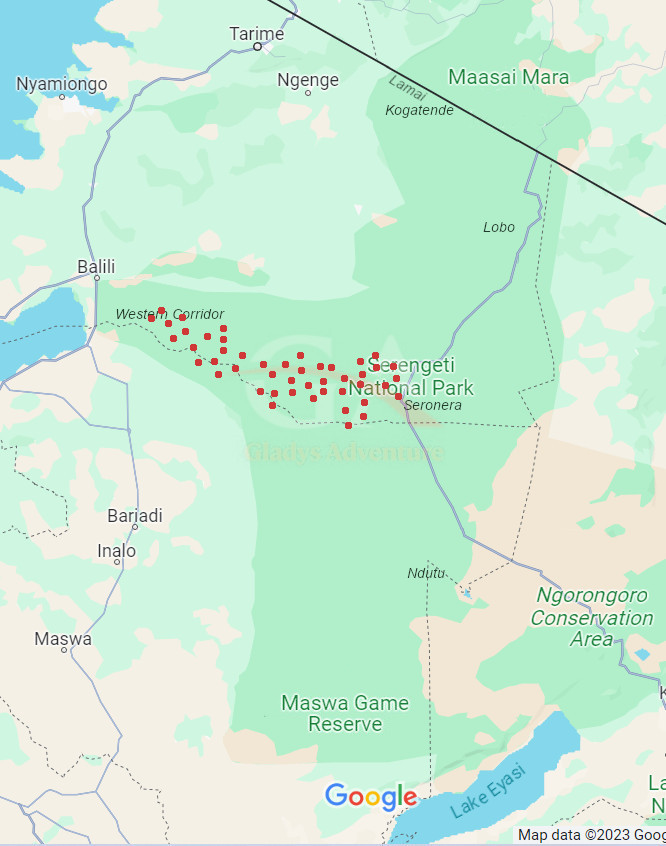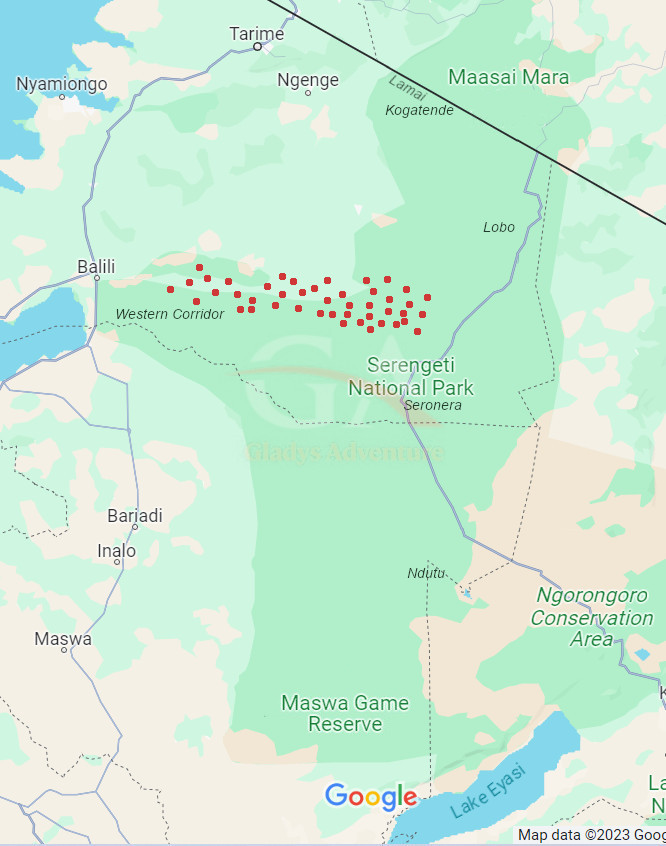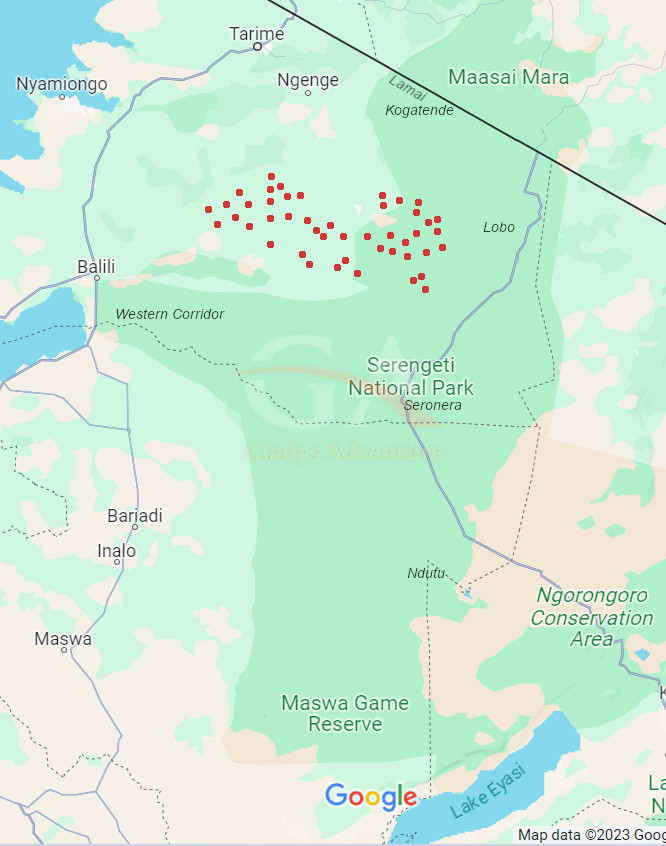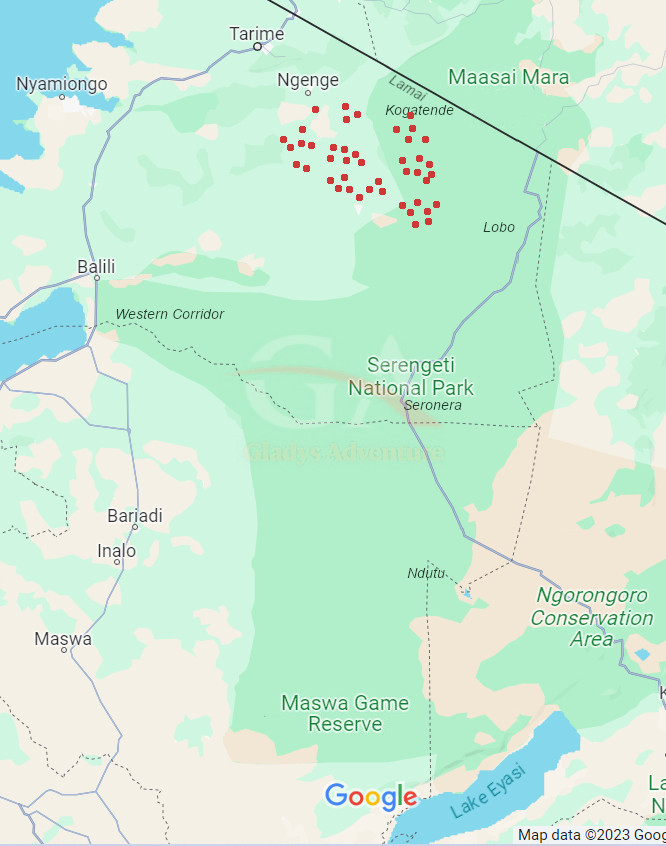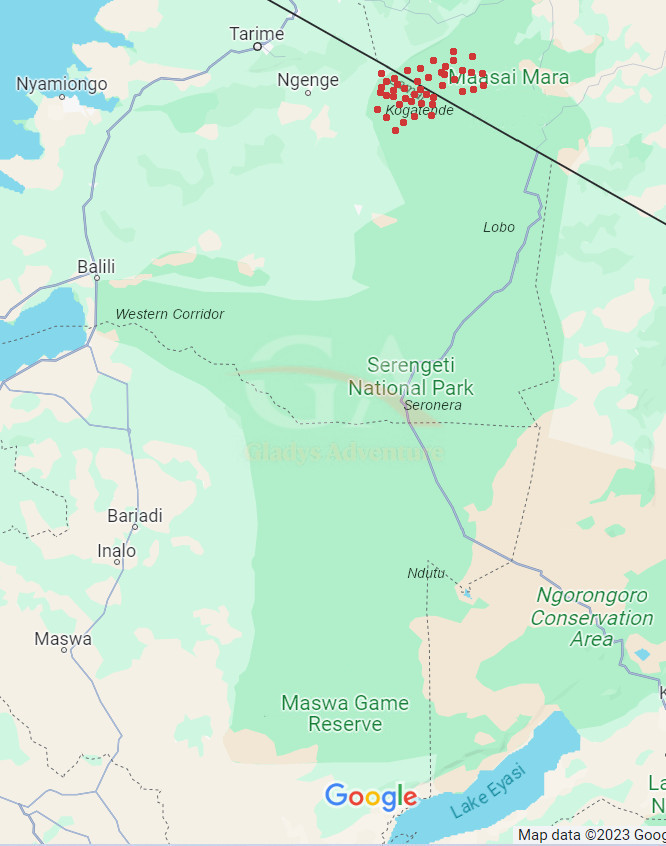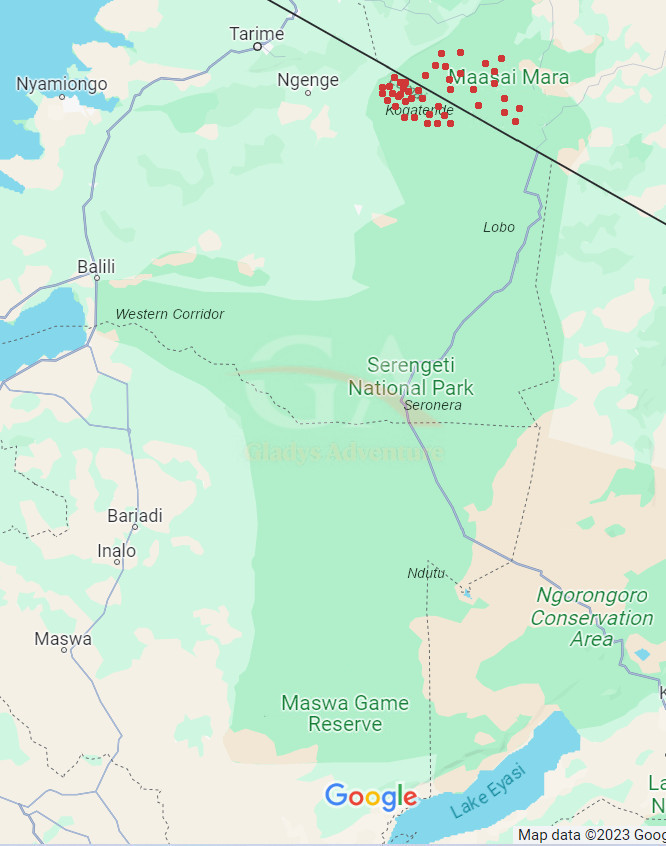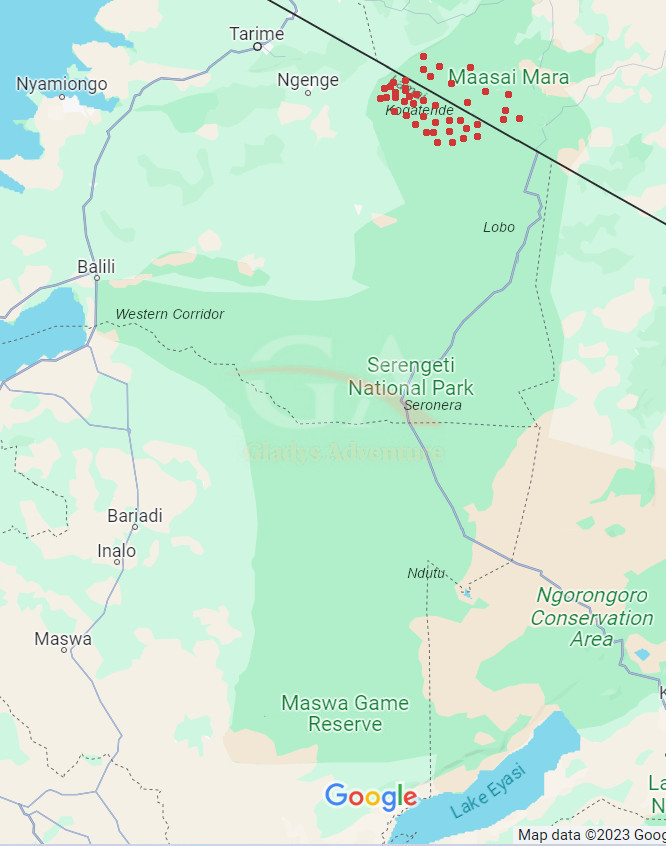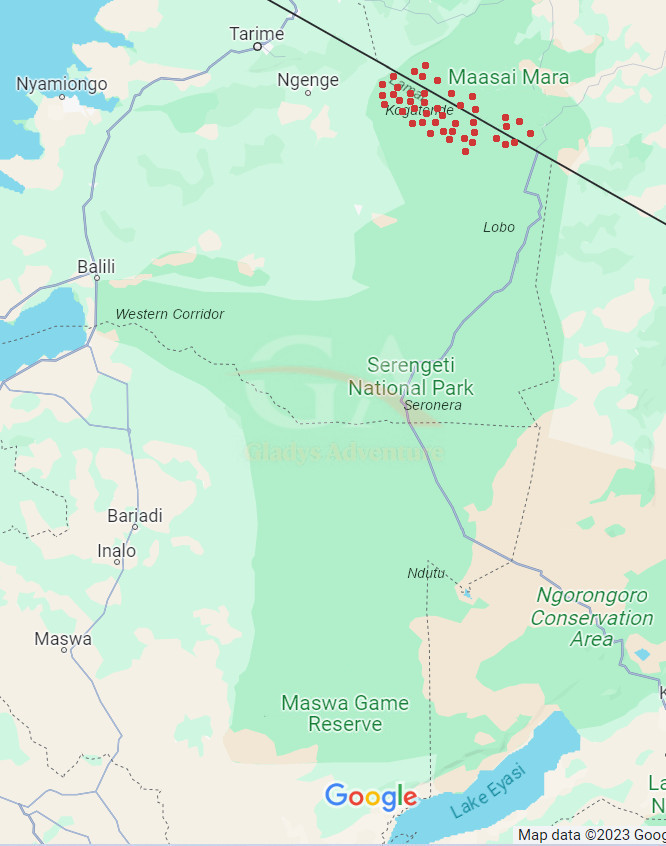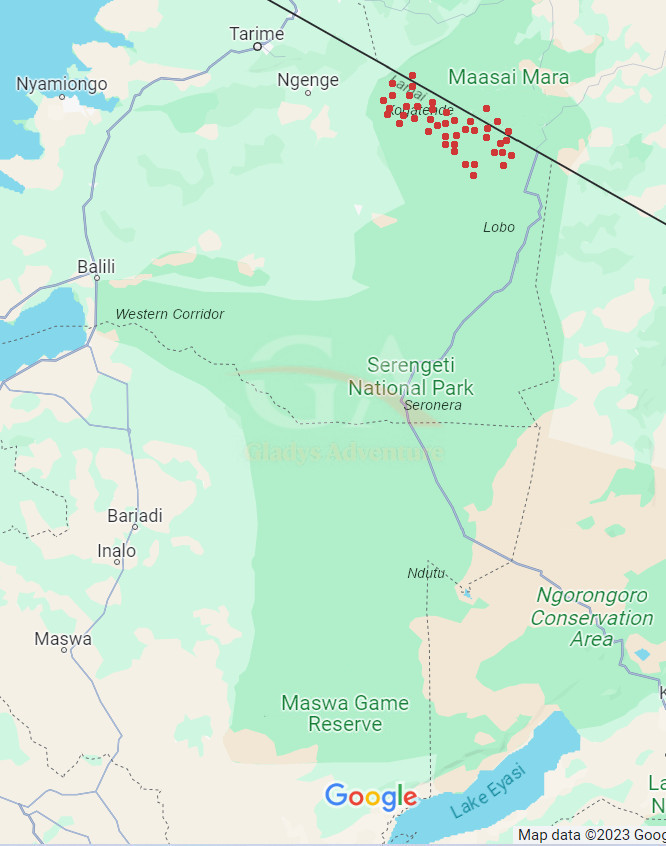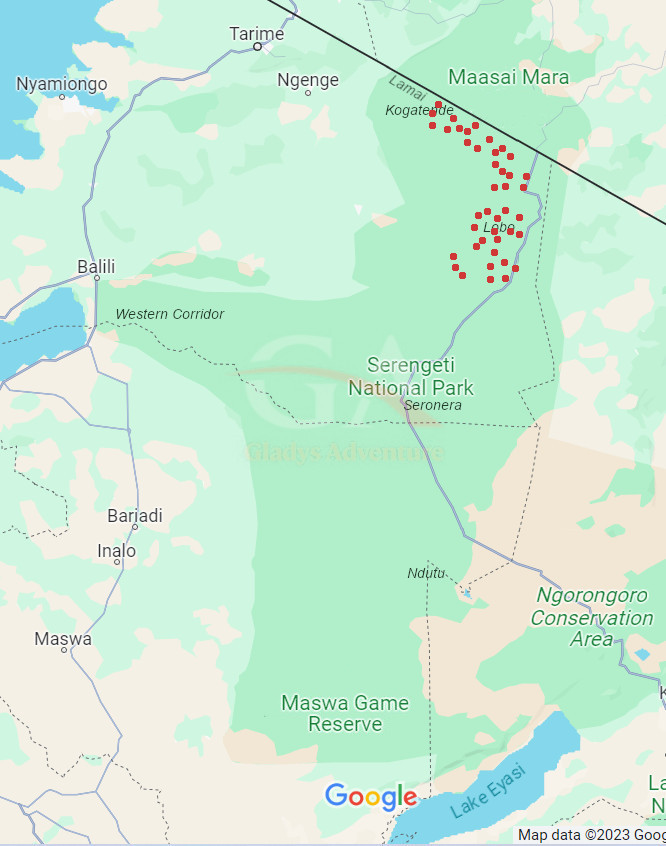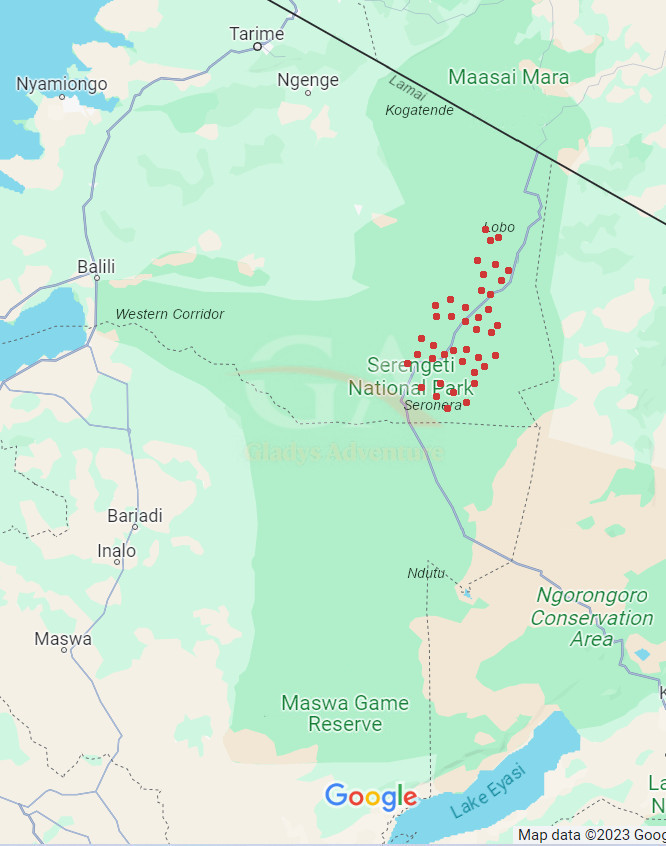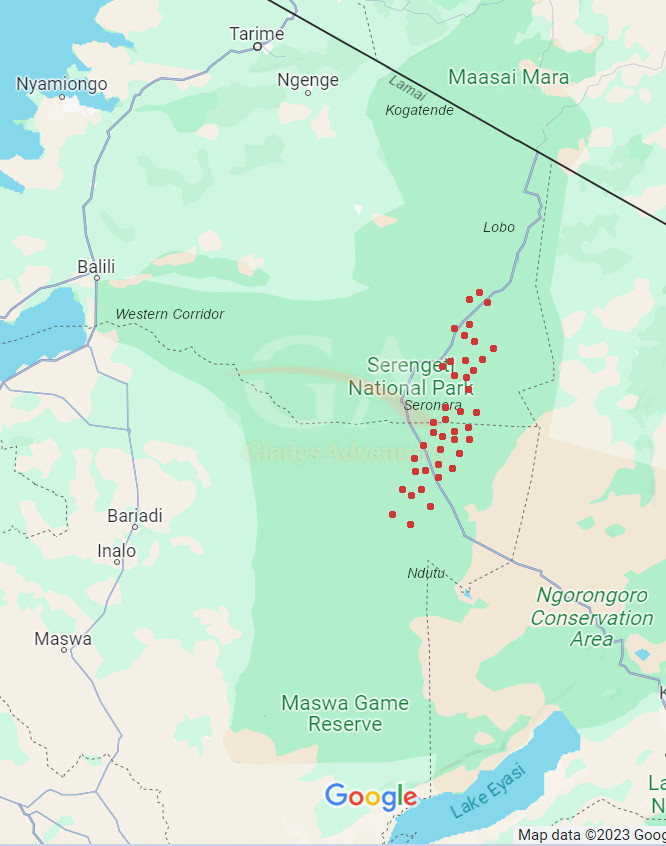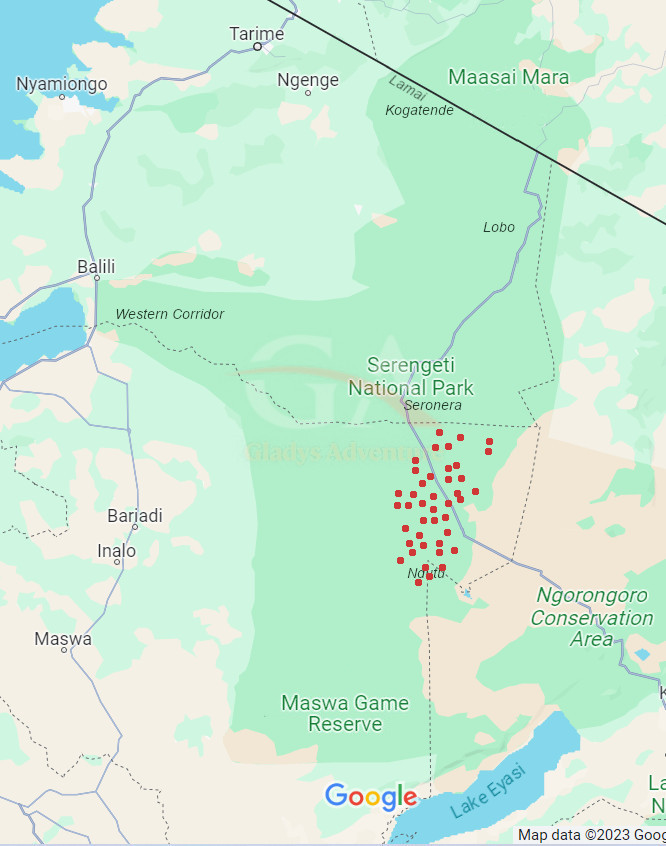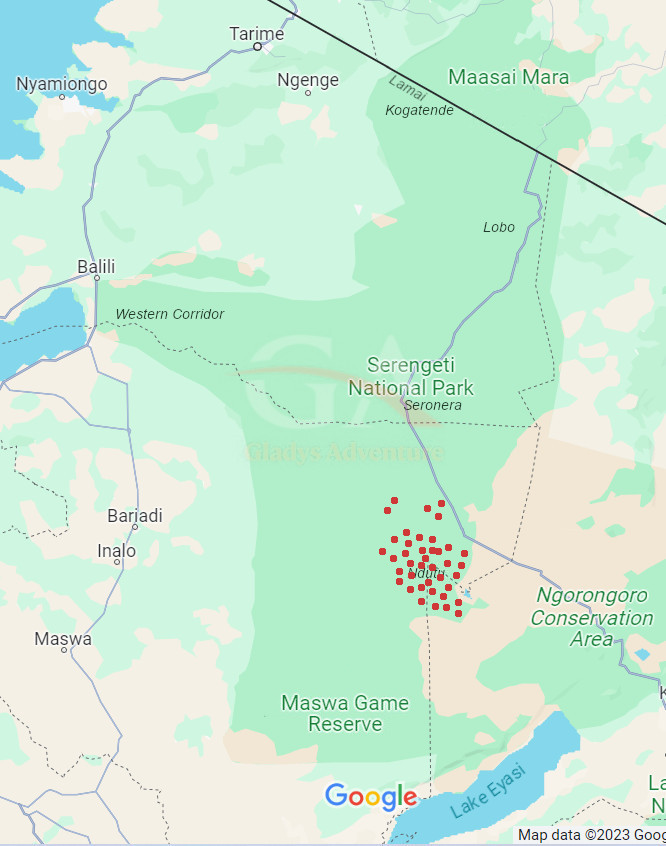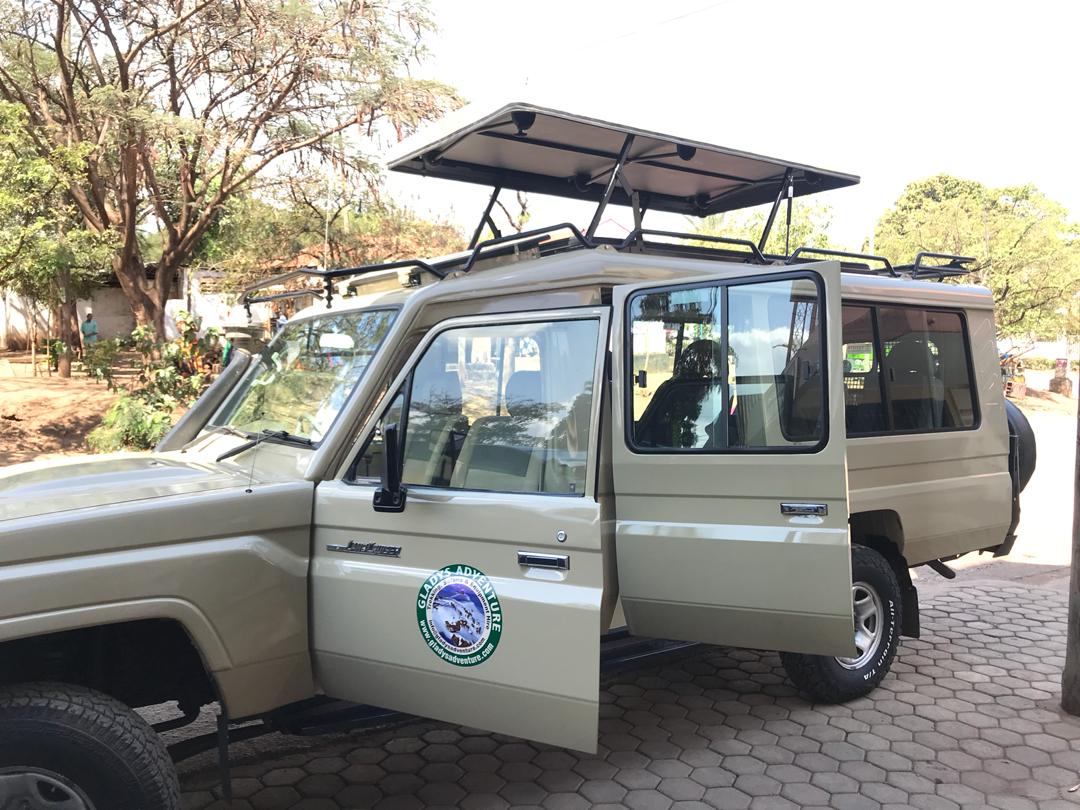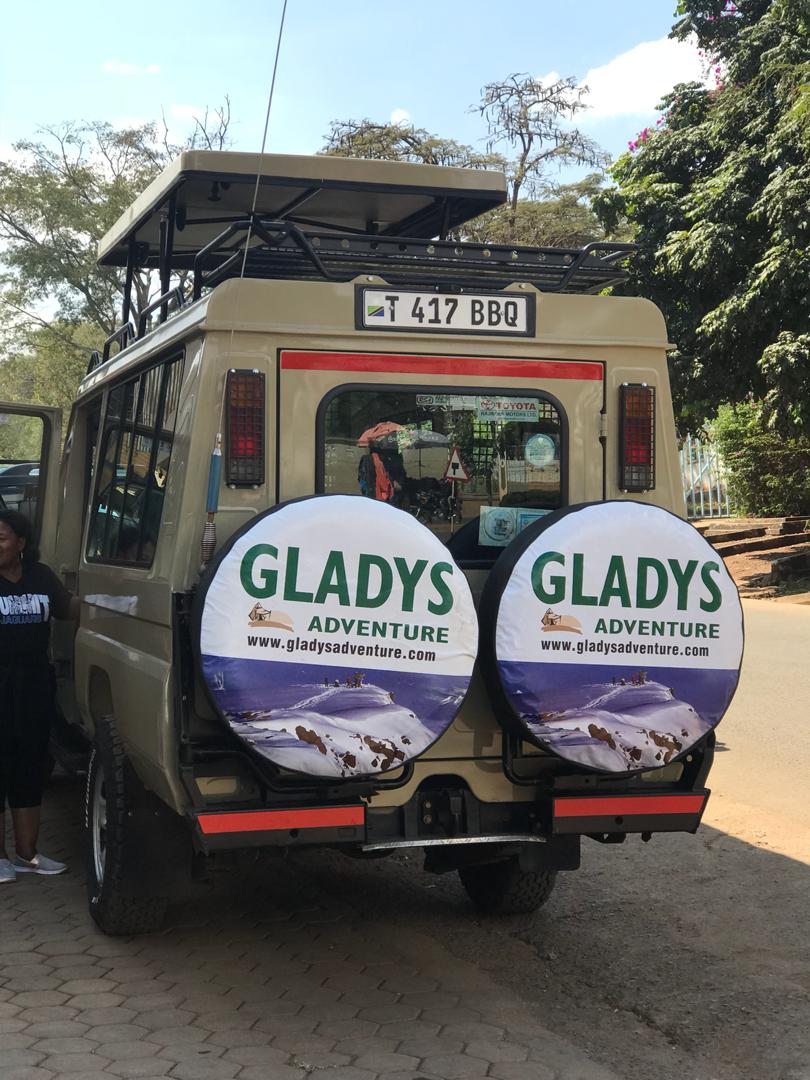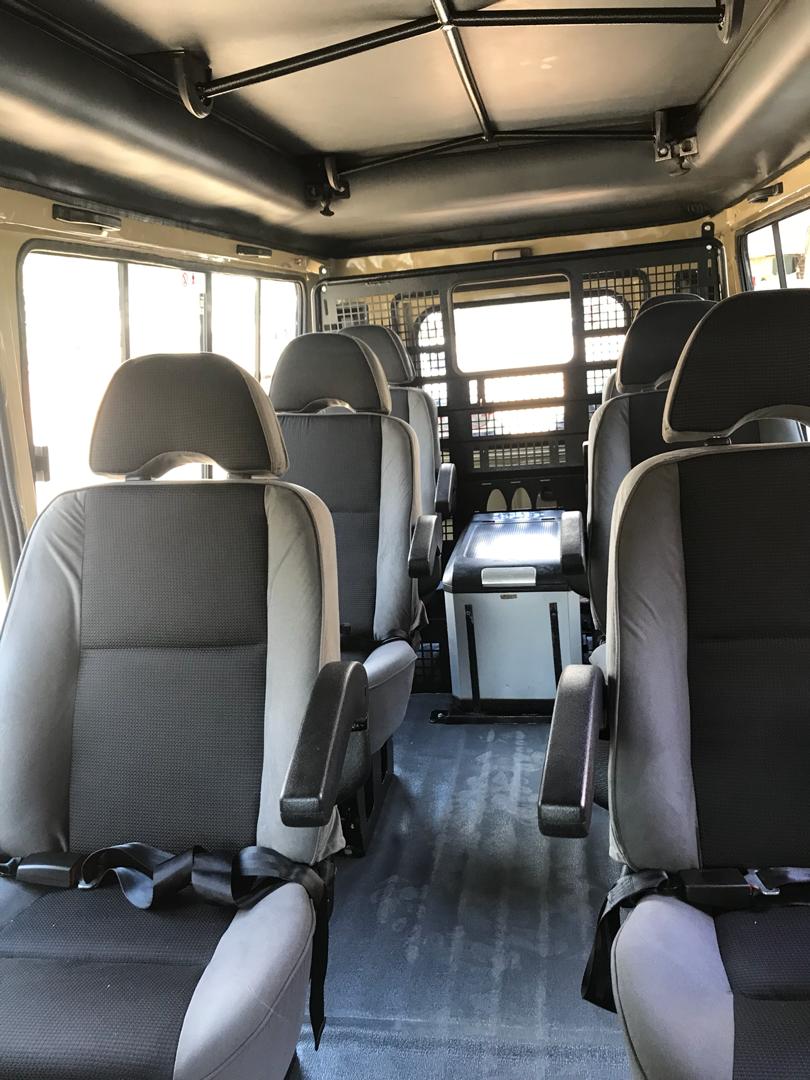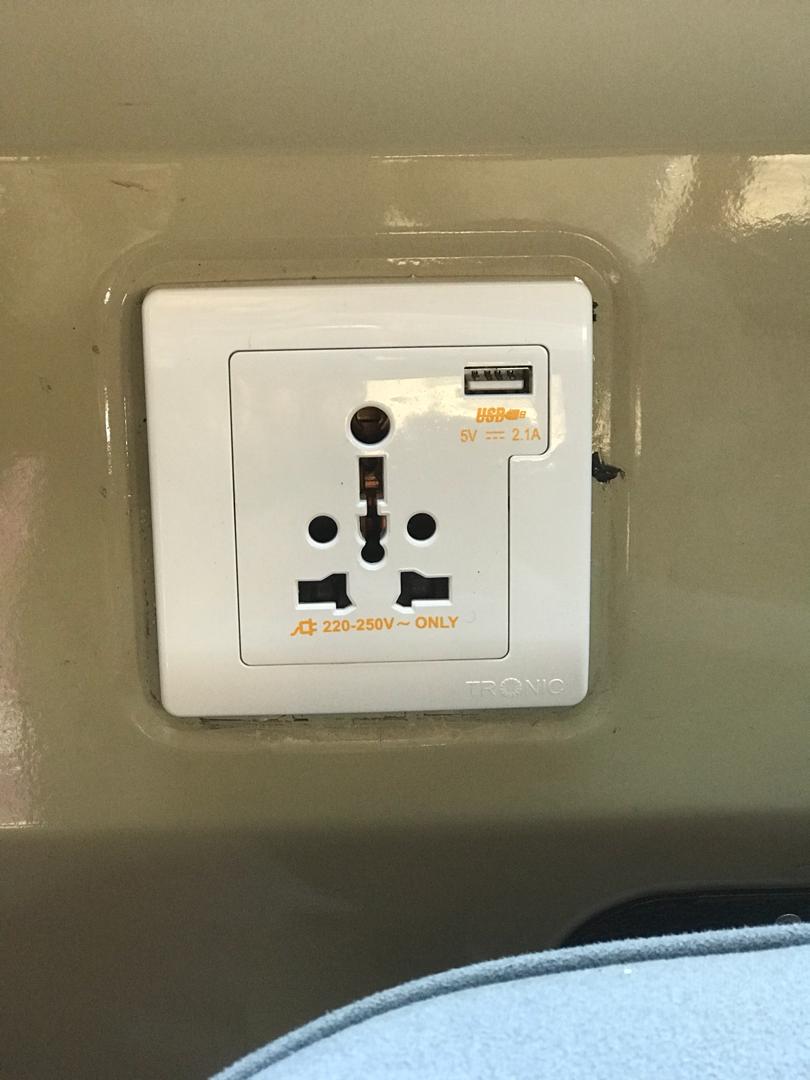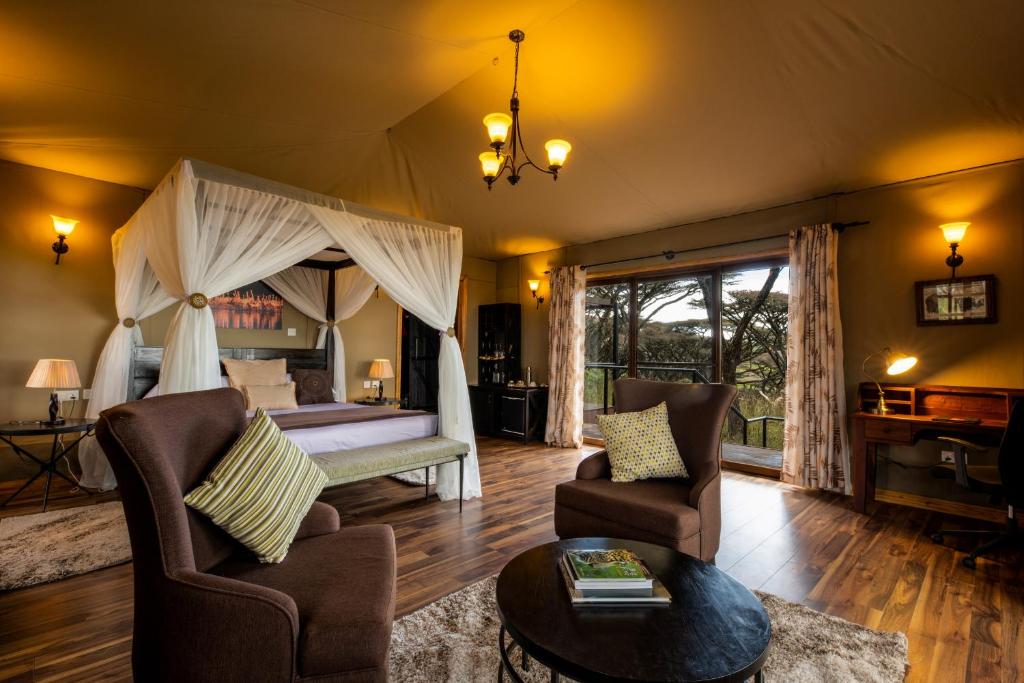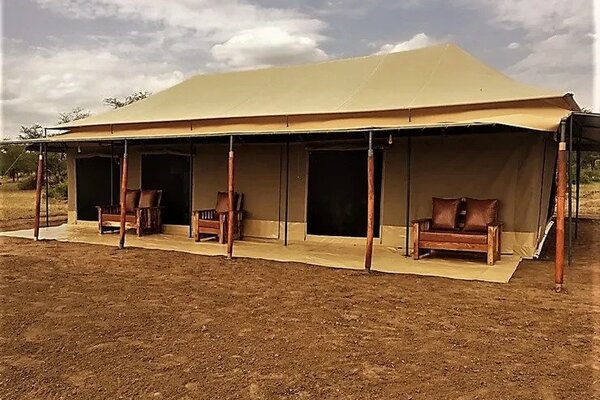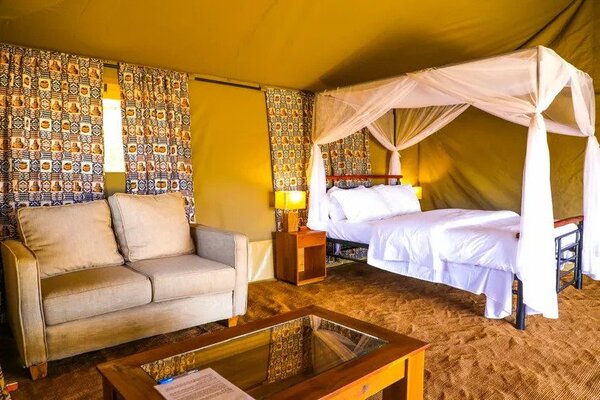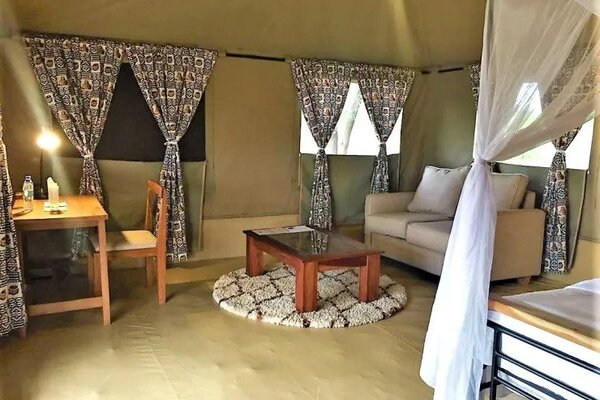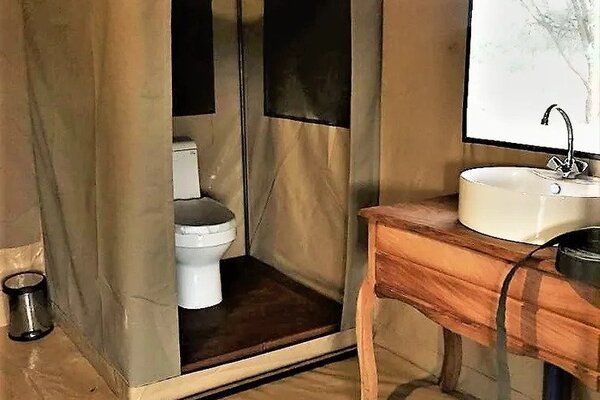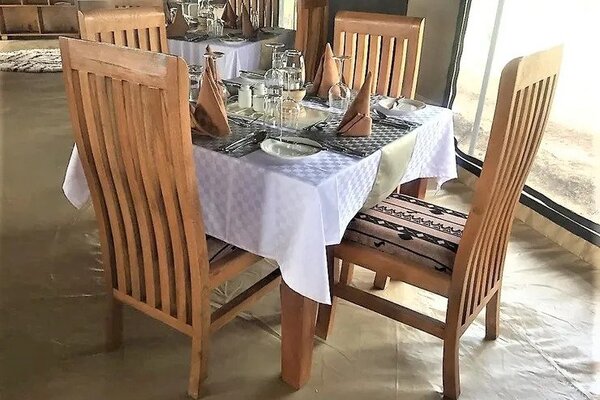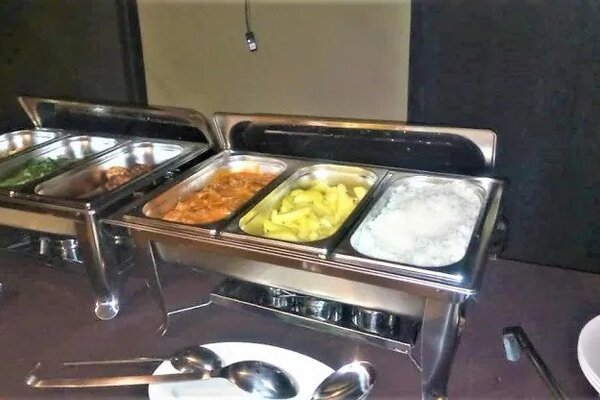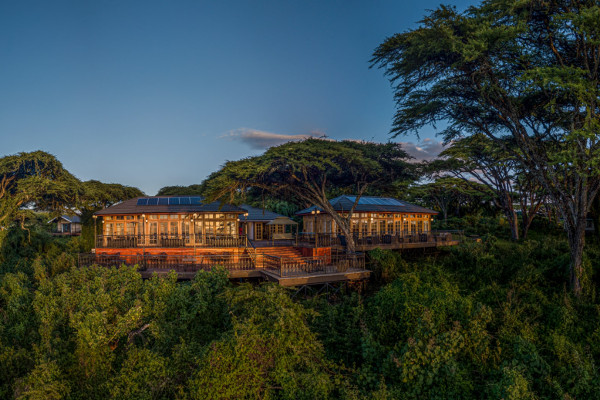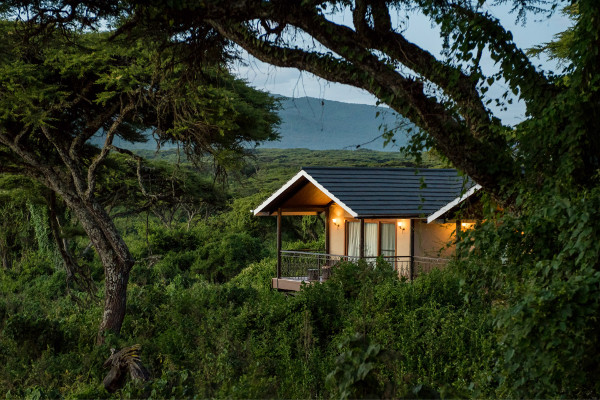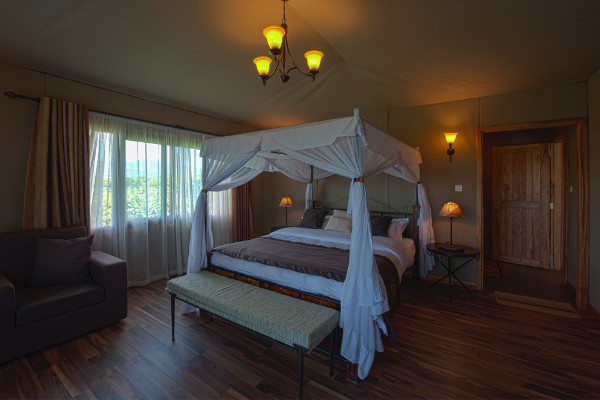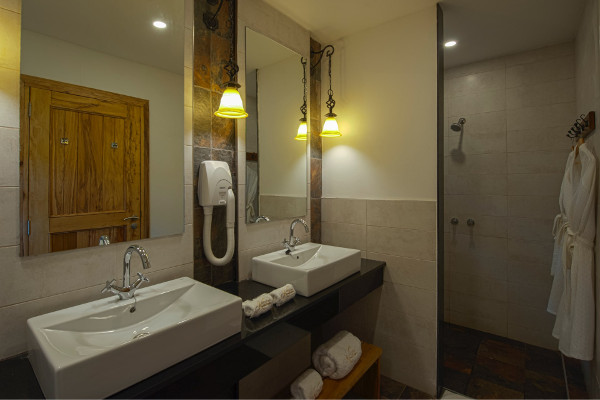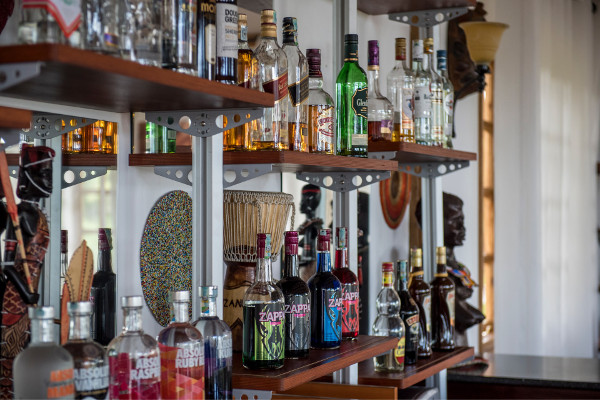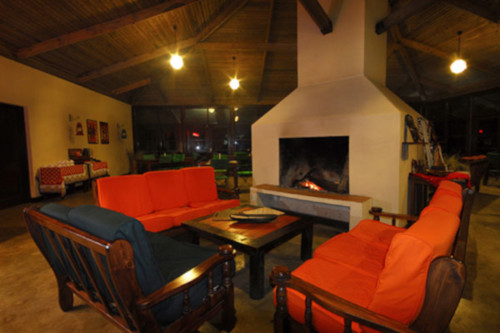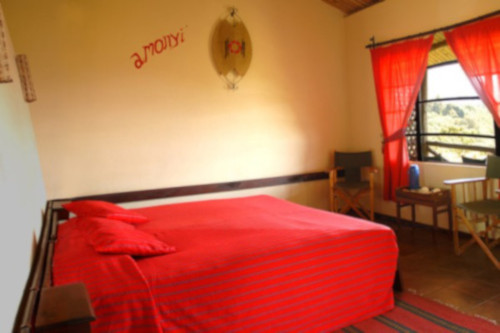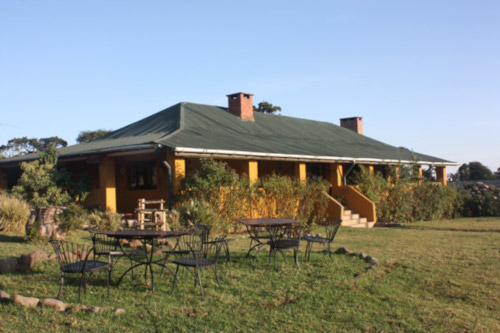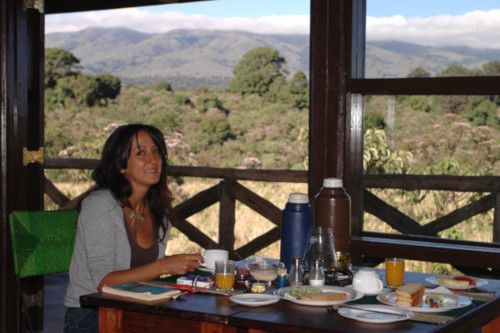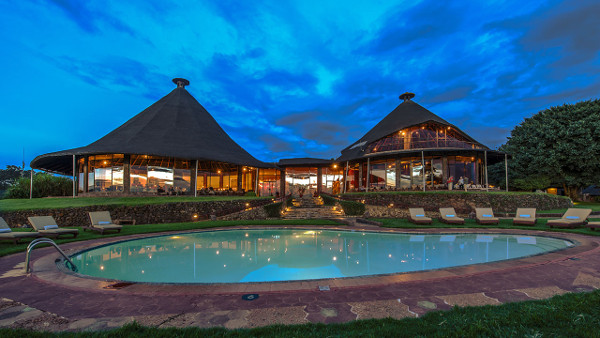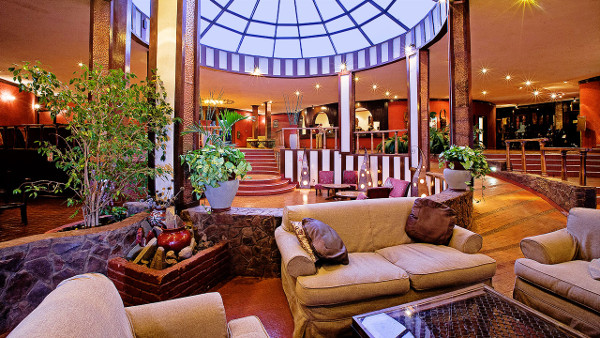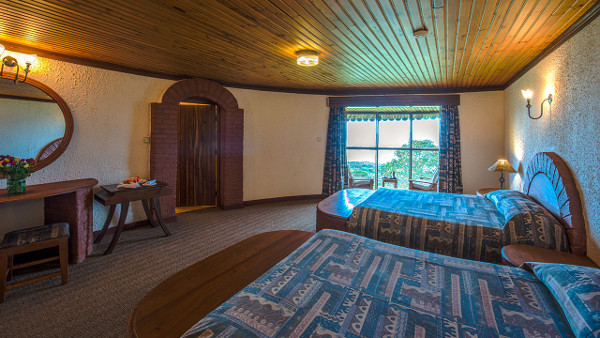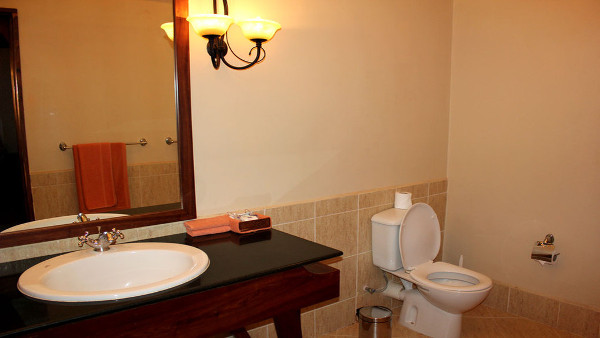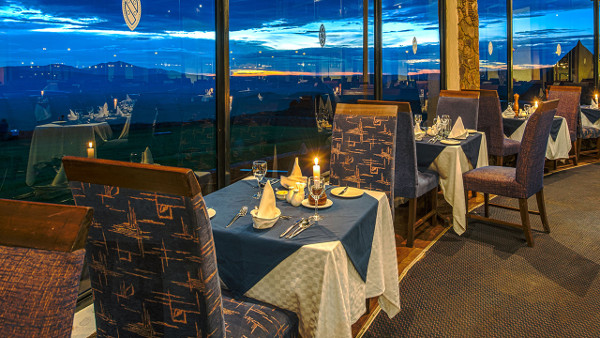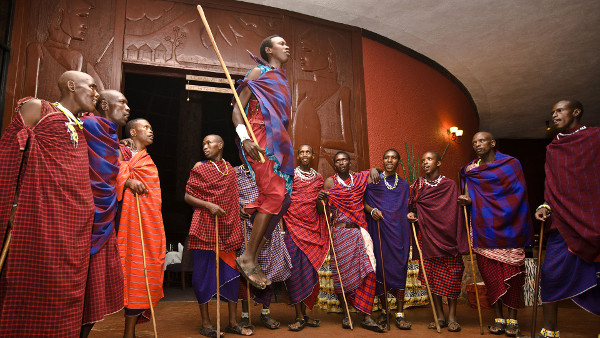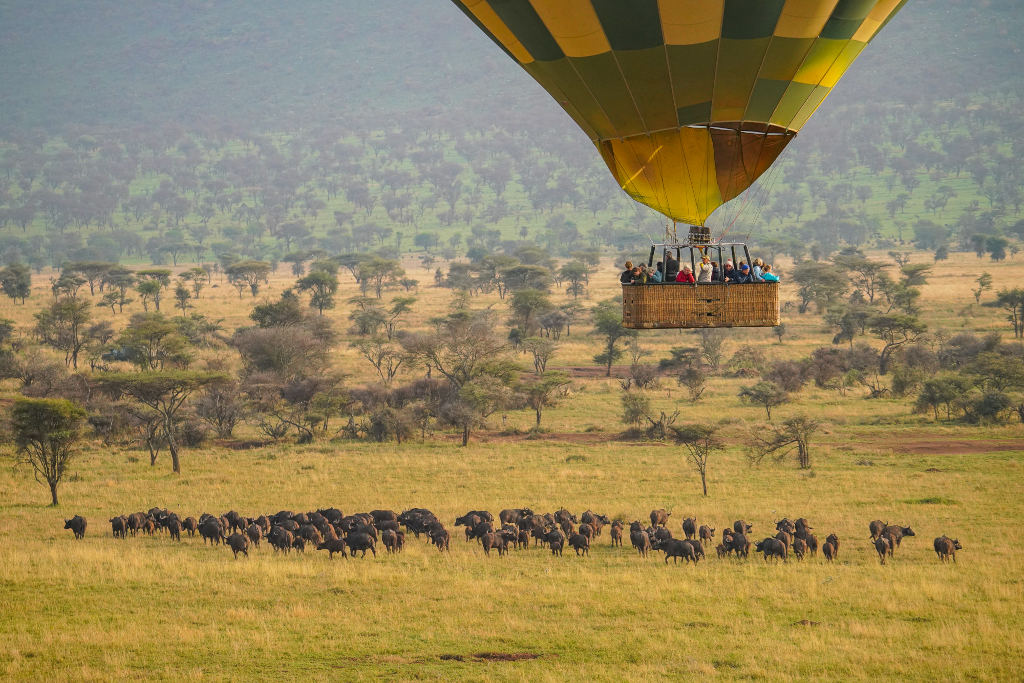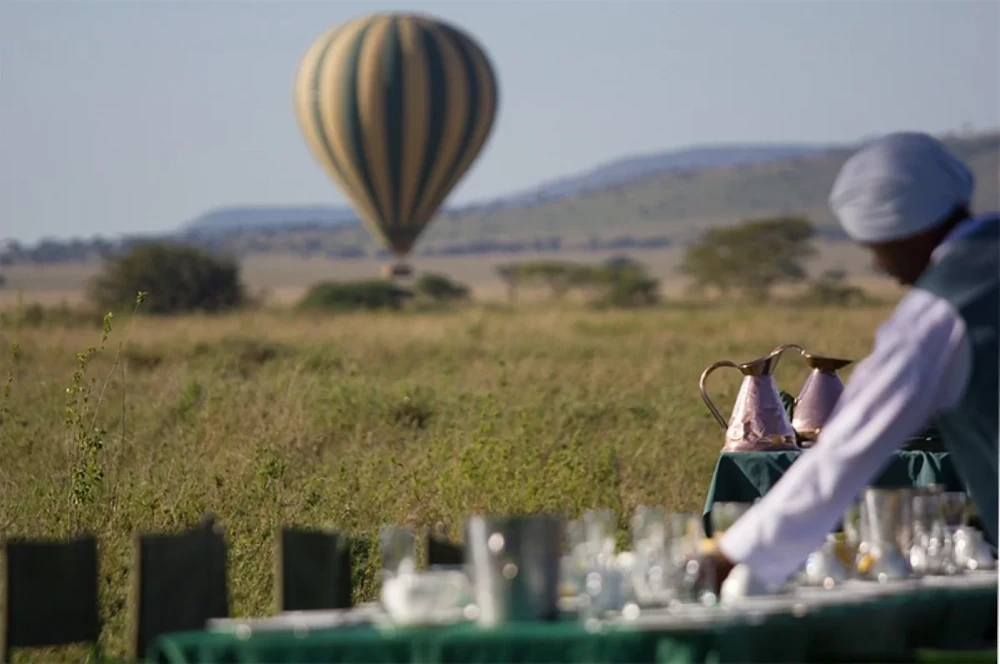Gladys Adventure & Safaris
inquiry.gladysadventure@gmail.com +255 787 111 881 WhatsApp ChatGladys
Adventure
Gladys Adventure
Safaris
The word safari is one of the Swahili words that has been incorporated into international usage. The Swahili meaning of the word is simply "trip". Outside of East Africa the meaning has become more specific to mean a trip offering wildlife viewing in the natural habitat. In Tanzania, with over 30% of its land being protected, this means that it is not difficult for a Tanzanian trip to be a safari. While safari destinations are to be found all over the country, Gladys Adventure has elected to stay focused close to our base in Moshi, Tanzania - "in the shadow" of Mt Kilimanjaro. We offer northern Tanzania safaris. But with the Serengeti and Ngorongoro Crater as the highlights along with several other solid destination choices, there is a great opportunity to see amazing sights. While the animals are amazing, so are the scenery and cultures. From the smoldering live volcano, Ol Doinyo Lengai, to the majestic crater walls in Ngorongoro Crater, tribal visit to the Maasai, following the Hadzabe tribe on a hunt, visiting Olduvai Gorge... the possibilities are endless.
Your Private Safari
All our safaris are private safaris. We will never add others to join your safari. Your private safari can start on any day of the year that you like. Each participant will always have a window seat and each of our safari vehicles has a pop-up safari viewing roof and charging ports for small electronics. Our vehicles are equipped with food hampers which allow us to serve you hot lunches rather than the industry standard boxed cold lunches. We use Toyota Land Cruisers with an extended body customized for safari use. We have the number of vehicles and English speaking guides to accommodate group sizes from 1 person to more than 50 people. If you feel more comfortable with languages other than English let us know well in advance. We can possibly arrange for a guide speaking the language that you prefer.
Because we want to offer you the best possible experience, we use only lodges and tented camps for safari accommodations. We do not offer basic camping safaris. We are confident that you will appreciate the difference without much impact on your budget.
--Trip Advisor Review · August 2025
A Perfect Safari - An Unforgettable Adventure!
July 2025 · Family
"Our 18-day Tanzania tour in July 2025 with Gladys was absolutely flawless. From planning to our return home,
everything ran like clockwork: punctual pick-ups, seamless logistics, and first-class service.
Organization & Dining
Gladys combined in-depth insider knowledge with a perfectly tailored itinerary. From boutique hotels to tented camps in
national parks and spacious lodges, every accommodation offered comfort and ideal opportunities for wildlife viewing.
Every snack and meal – from a picnic at Ngorongoro to a bush breakfast after our balloon ride – was fresh and delicious.
Highlights & Activities
- Walking Safari, Tarangire: Tracking animal footprints up close
- Ngorongoro Crater: Big Five safari in a spectacular setting
- Northern Serengeti: Witnessing the Great Migration at the Mara River
- Balloon Ride: Sunrise over endless wilderness
- Cultural Encounters: Coffee and tea tastings, visits to the Hadzabe and Datoga tribes, and exploring the Moshi market
Our Guide Mkonyi
More than just a driver:
- Nature Expert: Astonishing knowledge about animals, plants, and their behavior
- Warm & Flexible: Always ready to fulfill every wish – from spontaneous photo stops to little detours
Conclusion
Thanks to Gladys and Mkonyi, our safari became the trip of a lifetime. Safe, personal, and unforgettable – a wholehearted
recommendation for anyone who loves Tanzania!"

Fly-in Safari Options
You may consider optimizing your holiday time and reducing the time riding over rough roads in a safari vehicle by traveling by a safari plane. An airstrip is located inside Tarangire National Park, another just outside of Lake Manyara, and there are several airstrips inside the Serengeti. Departing from Kilimanjaro Airport or Arusha Airport, your safari guide and vehicle will be waiting for you at the airstrip ready for game viewing. You can opt to fly-in, or fly-out, or fly both directions. During high season (mid June - mid October) there is a flight option connecting central Serengeti (Seronera) and Zanzibar using a larger airplane (Precision Air). Full details about flight options are available upon request. We can arrange all domestic flight reservations.
Interactive Safari Map
Click on any of the shaded areas for details of this area
Gladys Adventure Great Migration Information

A Brief Migration Overview
The migration of wildebeests, zebras, and antelopes is an annual event timed according to the rains. The herds move in a clockwise loop starting from southern Serengeti & Ngorongoro Conservation Area (NCA) moving northward through the western portion of the Serengeti, reaching the northern border of the Serengeti where roughly half the herds cross into Kenya's Masai Mara and the others stay in the Serengeti. After a few months, the herds make their way southwards, further east from the previous path to return back to southern Serengeti and the NCA where they stay for a few months before starting the cycle again.
The two most interesting portions of this cycle is the birthing period of the wildebeests and the crossing of the Mara River by the herds. The birthing period of the wildebeests takes place in February to early March in the southern Serengeti & NCA in what is known as the Ndutu Area. During this period, a huge number of births take place daily and it is an active time for preditors. The newly born calves can stand up within 3 - 5 minutes after birth and are able to run just a few minutes later.
The most famous event of the migration is the Mara River crossing. This takes place in the northern Serengeti generally from mid-July through mid-October in the Kogatende and Lamai portions of the Serengeti. There are numerous dangers for the herds during this event, from being trampled by the herds, to evading the Nile crocodiles in the river, avoiding downing from exhaustion, to escaping lions, leopards, and hyenas waiting at the river banks.
During other times of the migration, it is still well worth visiting to see the huge number of animals and the activity of the preditors as the herds pass through their territories. A safari to the Seronera (central Serengeti) is the best location during these times.
There are airstrips at all these locations and a consideration of flying in and/or flying out is well worth considering but itineraries can be created for traveling to the destinations by safari vehicle also. The tour consultants at Gladys Adventure can aid you in creating an ideal itinerary according to the time of the year you are traveling.
Detailed Understanding of the Great Serengeti Migration
The Great Migration is among the greatest natural events on earth. Each year more than 1.5 million wildbeests, 500,000 zebras, and 450,000 gazelles and elands travel approximately 800 kilometers through the Serengeti, Kenya's Masai Mara, and neighboring protected areas in Tanzania. It is only in the Serengeti where at least a portion of the migration is present throughout the year.
It is not certain how long this annual migration has been going on, but we do know that it has been only recently that the numbers have been on the same magnitude as they are currently. It wasn't until 1958 that any documented study of this migration took place. At that time, the number of wildebeests migrating were a little under 100,000. This number has increased 15 fold in the last 65 years. By the fact that in 1958 the researchers were amazed at the number being as high as almost 100,000 it is most probable that in prior years the number was smaller yet.
The driving force behind the migration is the search for the best grass for grazing. This is dependent on the rains so there are variations each year to the timing and paths that the animals take. There is no competition for food between the wildebeests, zebras, and gazelles because their digestive systems are different, with zebras eating only the grass tops, gazelles the mid-sections, and the wildebeests eat only the short grass stubble. The wildebeests have a great sense of smell and can detect rains from a long distance away. They have good hearing but not very good eyesight. Zebras have good eyesight and good memory. Together they help each other. The herds have no natural leaders but once some animals go on the move, the others follow. But without an actual leader, the herds fragment and do not all follow the same path. Still a single herd can be up to 40km (25 miles) in length.
The soil in the southern Serengeti, Lake Ndutu, and Lake Masek in the Ngorongoro Conservation Area (NCA) is the most nutrient rich, making it the preferred destination for the herds. Because of the lakes, there is no shortage of water. From the months of December through March the herds reside here. December and January is when zebras give birth. From late January until early March is when wildebeests give birth.
The statistics which are given from several reliable sources including National Geographic list 400,000 calves being born. But the same sources commonly state that the vast majority of births are within a 3 week period. We at Gladys Adventure can confirm that this time period as accurate through our own observation. But yet the same sources commonly state that there are "as many as 8,000 births a day". This math does not work out (400,000 calves/8,000 calves per day = 50 days for this to occur). So lets just say that there are a huge number of births over a three week period.
A pregnant wildebeest can delay giving birth for up to four weeks in order to time the birthing with the other wildebeests. By giving birth simultaneously, it increases the survival percentage since preditors who take advantage of the fragile condition of the new-born calves and mothers can only eat so much at a time. The calves can stand within 3-5 minutes after birth and are already running a few minutes later. From late January through March is a great time of the year to safari to the Ndudu area to see the migration. Lions, leopards, cheetahs, and hyenas are very active during this time. The boundary between the NCA and Serengeti is marked only with beacons and the animals roam back and forth between the two destinations. For the best game viewing, having both a permit for Serengeti and for Ngorongoro Conservation Area each day is best and is standard for Gladys Adventure safaris visiting Ndutu.
As the April rains arrive, the herds spread out and start moving north in search of fresh grass. Central Serengeti (Seronera) is a good base to find the herds except that the rains can make safaris during this time of the year more challenging in terms of visibility, comfort, and road conditions. During this time, typically some of the herds travel through the Seronera (central) portion of the Serengeti while a portion makes it way further west, toward the Maswa Game Reserve and the Western Corridor portion of the Serengeti. There is misrepresentation on some sources claiming that preditors follow after the herds. This is largely untrue because lions, cheetahs, leopards, and hyenas are all territorial. So while there may be some encroachment into different territories by preditors, it is done at great risk and not in large numbers.
In May and June the herd movement picks up speed as the migration continues north. The migration herds in the Western Corridor cross the Grumeti and Mbalageti Rivers. Some years this provides interesting viewing but the timing of the crossing is very unpredictable. The herds are in a hurry at this time and the duration of the river crossing lasts only about a week before the herds have passed over. The river crossings here are not as spectacular as the crossing of the Mara River because the river banks are not steep entering and exiting the Grumeti and Mbalageti Rivers compared to the Mara River and some year the water levels are very low so the herds can wade across instead of swim. Nevertheless, there are some huge Nile crocodiles eagerly looking for the opportunity to attack. Because the herds are also in the Seronera at this time, during a May - early July safari, staying in Seronera portion is best. If the timing is right to see the river crossing in Western Corridor, a game drive there from Seronera is not too far and is quite possible to visit during a day's safari viewing.
During early July, some of the herds may be reaching the Kogatende portion of the Serengeti, located on the south side of the Mara River. Of course the spectaular and dangerous Mara River crossing by the herds is the most famous event during the migration cycle. What is not commonly known though is that where herds initially cross the Mara River, both sides of the river are in the Serengeti. The border into Kenya's Masai Mara is further north. Although the percentages vary each year, typically less than half the migration herds ever enter the Masai Mara, with the majority staying in the Serengeti. There are 10 commonly used Mara River crossing points in the Serengeti. To be clear, there are Mara River crossings by herds in the Masai Mara as the Mara River comes from Kenya (see map below) but the initial crossings of the Mara River are all in Tanzania.
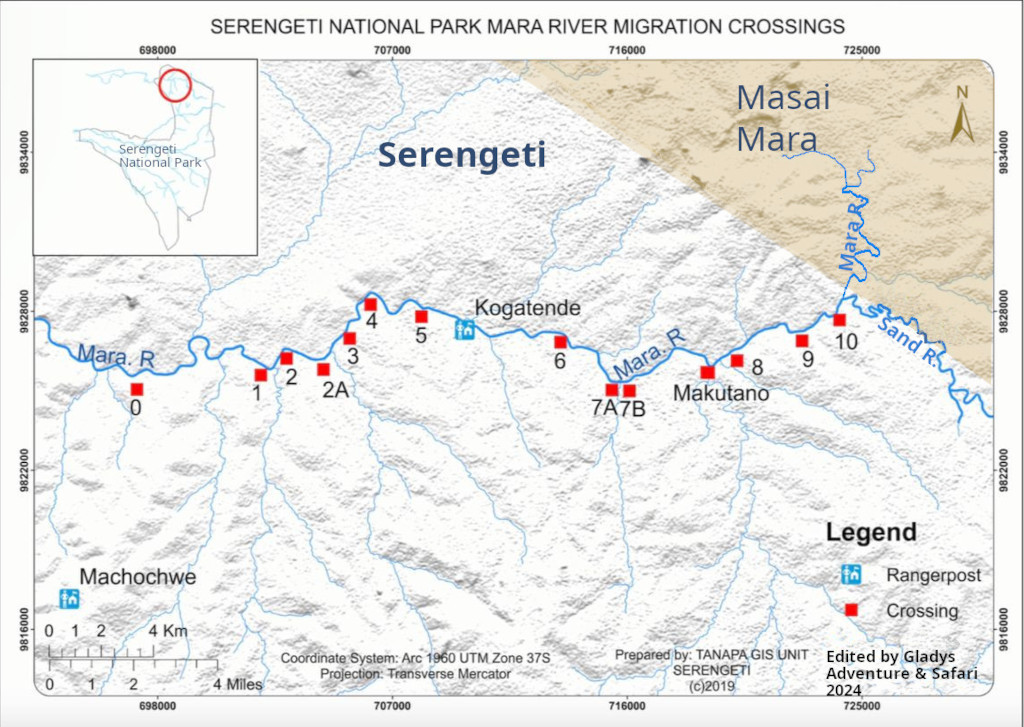
By late July and August nearly all the herds have reached the Mara River. Many animals, especially the zebras and antelopes choose not to cross the river and spend the next two to three months grazing in the Kogatende portion of the Serengeti. Many will cross the Mara River, and will graze the a remote portion of the Serengeti known as the Lamai Triangle. The Lamai Triangle has only a few accommodations (but excellent) and the area is accessable by a seasonal bridge. There are airstrips at both Lamai (north of Mara River) and Kogatende (south of Mara River).
In northern Serengeti and Masai Mara, the grasses are less nutritious compared to the southern Serengeti. So the wildebeest are constantly on the move here in search of new grass using their sense of smell to detect where there has been rain. Crossing the Mara River is a very dangerous event. The herds may gather at the river bank for hours or days before the herd makes its move en mass across the river. The Mara River has steep river banks, making entering and exiting the river difficult. There are broken legs from wildebeest leaping into the river and landing on another animal or a large rock, some wildebeest being attacked by Nile crocodile, and some downing from fatigue. If a mother and calf get separated and cannot find each other, they will often swim back across, calling for each other. This can go on for several crossings until either they find each other, they drown from fatigue, or are attacked by a preditor. Reaching the steep river bank fatigued it presents lions, leopards, and hyenas opportunities to attack the wildebeest.
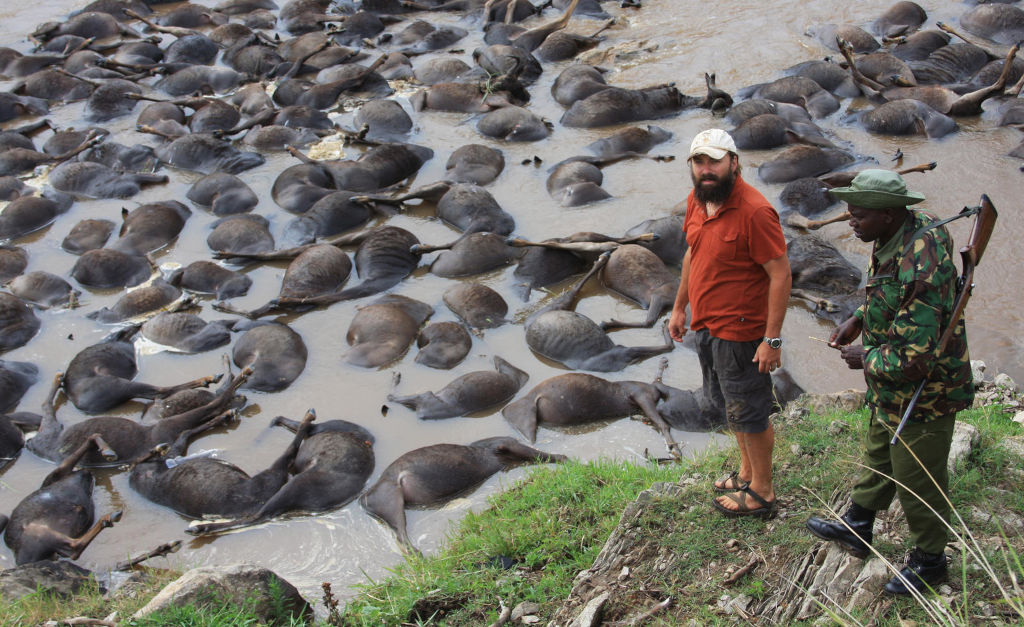
The above image of wildebeest drownings is from Cary Institute Website (www.caryinstitute.org).
The activity in Kogatende and Lamai Triangle is quite active from July - October. The herds in some years cross the Mara River back and forth multiple during this period. As the grasses become depleted, the herds make their way back south typically traveling south on a path further east than their northward route. For an October/November safari visiting the Lobo and Seronera portions of the Serengeti would be the best bet for spotting the herds.
The migration loop completes itself as the herds return to Ndutu in December, recovering and preparing to give birth and gather strength for another cycle.
Safari Itineraries
We can offer safaris covering any duration of time. The longer the itinerary, the more individualized the itinerary will become according to your interests and according to the time of the year. There are variations available especially during the birthing season of the wildebeest in February & early March and also during the migration herds Mara River crossing typically from July - October. Contact us and we can create the safari itinerary of your dreams.
We have included the most common shorter itineraries below, often requested by clients to add after a Mt Kilimanjaro trek. But even these are not the only choices for short itineraries.
Click for details.
-
Day 1: After breakfast, we collect you from your hotel and drive you to Kilimanjaro or Arusha Airport for a flight into the Serengeti. Being quite large, the Serengeti has several airstrips for small planes. The portion of the Serengeti you will arrive at will be determined well in advance according to where the best game viewing is during your particular time of travel. Your Gladys Adventure private safari vehicle and guide will be waiting for you and we will proceed on a game drive for the rest of the day. In the late afternoon we will arrive at your evening's lodge/tented camp for dinner, relaxation, and overnight rest.
Drive hours from Moshi/Arusha to airport: 45 minutes
Meals: picnic lunch, and dinnerDay 2: Full day to spend as you wish with game viewing and relaxation at your accommodations. Overnight will be at the same accommodations as the previous night.
Game viewing according to your desired time.
Meals: Breakfast, lunch, and dinnerDay 3: Enjoy more game viewing/relaxation at the accommodations. If you desire to experience an early morning hot-air balloon safari (additional fee), this is a great day to fit it into your itinerary. Regardless of which portion of the Serengeti you arrived at, by the late afternoon we will take you to accommodations in central Serengeti (Seronera) for dinner and overnight rest. Activity: Game drives/relaxation
Meals :Breakfast, lunch, and dinnerDay 4: After breakfast, we set out to get our last look at the Serengeti and view the wildlife. We continue viewing game while we make our way out of the park, entering Ngorongoro Conservation Area (NCA). There are optional side trips: visiting a Maasai village or visiting Olduvai Gorge Museum - an important paleontological site. We then arrive at your lodge/tented camp for relaxation, dinner and overnight rest. Note: All accommodations are outside the crater, most are near the crater rim. This is a cold location since there is some altitude (7,500 ft or 2286m). Even a knit cap and light gloves may feel welcome since it also tends to be windy.
Drive hourss: 3-4 hours
Meals: Breakfast, picnic lunch, and dinnerDay 5: After breakfast, we will descend into Ngorongoro Crater. The high concentration of animals and the beauty of the surrounding crater walls makes this a wonderful safari destination. In the course of a few hours you may see all of the "Big 5". The size of the crater is such that in 4 - 5 hours all can be seen. We then we ascend out of the crater and make our way to Kilimanjaro Airport (JRO),Arusha, or Moshi (You can arrive at the airport by mid-afternoon). Accommodations for this night are not included in the price quote.
Drive hours: 4-5 hours
Meals: Breakfast, picnic lunchStandard package is based at staying at Into Wild Africa Camp in the Serengeti, and Rhino Lodge in Ngorongoro Conservation Area.
Luxury package is based on staying at Serengeti Semetu Tented Camp or Serengeti Serena Safari Camp Lion's Paw Tented Camp or Ngorongoro Serena Safari Lodge. .
Other options are available but may affect the safari price.Contact us for Current Pricing
info@gladysadventure.comINCLUDES:
Flight from Kilimanjaro/Arusha to Serengeti
Transport in a 4WD safari vehicle
All park fees
All government taxes
English speaking driver guide
Accommodation and meals as stated in the program
EXCLUDES:
Accommodations before or after the safari
International flights & visas
Travel insurances
Driver guide or local escort tips
Drinks and dining rooms tips
Personal travel and baggage
Telephone bill, laundry and any items of a personal nature
Optional side-trips mentioned and balloon safari option
Activities not mentioned in the program
Clients average giving a tip for the guide of $ 30 to $ 40 per day per group
Note: The price quoted is based on double occupancy. For odd numbers, one single occupancy has already been taken into account. By default we divide the total price evenly between all participants. If you wish, we can calculate separate prices for those with double occupancy and the person with single occupancy.
-
Day 1: After breakfast, we collect you from your hotel and proceed to Tarangire National Park for a game drive. This park is especially known for the large number of elephants and giraffe. Animals from the surrounding area congregate along the Tarangire River which winds its way through the park. The park has a large number of baobab trees and is quite scenic. We pause for a picnic lunch inside the park, then continue with the game drive. In the evening we settle in at our lodge/tented camp for overnight.
Drive hours from Moshi:3.5 - 4 hrs
Meals: box lunch and dinnerDay 2: After breakfast, we drive to Serengeti National Park. This drive takes us through Ngorongoro Conservation Area (not through the crater but through the highlands). Once we arrive at the Serengeti, we proceed on a game drive until evening. Relaxation, dinner and overnight will be at lodge/tented camp inside of the Serengeti.
Drive hours: 6 hours
Meals: Breakfast, picnic lunch and dinnerDay 3: This day is all yours. You will arrange with your guide how you want to spend your time. If you ever desired an early morning hot-air ballon safari followed by a picnic breakfast in the wild accompanied by sparkling wine, this morning is your chance (extra fee). If you prefer a full day game drive, or breaking the game drives up with afternoon relaxation at the accommodations, the choice is yours. Dinner and overnight rest will be at the same accommodations as the previous night.
Activity:Your option
Meals :Breakfast, picnic lunch and dinnerDay 4: After breakfast, we set out to get our last look at the Serengeti and view the wildlife. We continue viewing game while we make our way out of the park and back into Ngorongoro Conservation Area (NCA). Along the way, there are optional side-trips: visiting a Maasai village or visiting Olduvai Gorge Museum - an important paleontological site. where we will have dinner and overnight rest at a lodge/tented camp. Note: All accommodations are outside the crater, most are near the crater rim. This is a cold location since there is some altitude (7,500 ft or 2286m). Even a knit cap and light gloves may feel welcome since it also tends to be windy.
Drive hrs: 3-4 hrs
Meals: Breakfast, picnic lunch, and dinnerDay 5: After breakfast, we will descend into Ngorongoro Crater. The high concentration of animals and the beauty of the surrounding crater walls makes this a wonderful safari destination. In the course of a few hours you may see all of the "Big 5". The size of the crater is such that in 4 - 5 hours all can be seen. We then we ascend out of the crater and make our way to Kilimanjaro Airport (JRO) or back to Arusha/Moshi (You can arrive at the airport by mid-afternoon). Accommodations for this night are not included in the price quote.
Drive hours: 4-5 hrs
Meals: Breakfast, picnic lunchStandard package is based at staying at Tarangire Safari Lodge, Into Wild Africa Camp in the Serengeti, and Rhino Lodge in Ngorongoro Conservation Area.
Luxury package is based on staying at Tarangire Kuro Treetops Lodge
Serengeti Semetu Tented Camp or Serengeti Serena Safari Camp Lion's Paw Tented Camp or Ngorongoro Serena Safari Lodge or Ngorongoro Sopa Lodge. .
Other options are available but may affect the safari price.Contact us for Current Pricing
info@gladysadventure.comINCLUDES:
Transport in a 4WD safari vehicle
All park fees
All government taxes
English speaking driver guide
Accommodation and meals as stated in the program
EXCLUDES:
Accommodations before or after the safari
International flights & visas
Travel insurances
Driver guide or local escort tips
Drinks and dining rooms tips
Personal travel and baggage
Telephone bill, laundry and any items of a personal nature
Optional side-trips mentioned and balloon safari option
Activities not mentioned in the program
Clients average giving a tip for the guide of $ 30 to $ 40 per day per group
Note: The price quoted is based on double occupancy. For odd numbers, one single occupancy has already been taken into account. By default we divide the total price evenly between all participants. If you wish, we can calculate separate prices for those with double occupancy and the person with single occupancy.
-
Day 1: After breakfast, we collect you from your hotel and drive you to Kilimanjaro or Arusha Airport for a flight into the Serengeti. Being quite large, the Serengeti has several airstrips for small planes. The portion of the Serengeti you will arrive at will be determined well in advance according to where the best game viewing is during your particular time of travel. Your Gladys Adventure private safari vehicle and guide will be waiting for you and we will proceed on a game drive for the rest of the day. In the late afternoon we will arrive at your evening's lodge/tented camp for dinner, relaxation, and overnight rest.
Drive hours from Moshi/Arusha to airport: 45 minutes
Meals: picnic lunch, and dinnerDay 2: Enjoy more game viewing/relaxation at the accommodations. If you desire to experience an early morning hot-air balloon safari (additional fee), this is the chance to make this a reality. Regardless of which portion of the Serengeti you arrived at, by the late afternoon we will take you to accommodations in central Serengeti (Seronera) for dinner and overnight rest. Activity: Game drives/relaxation
Meals :Breakfast, lunch, and dinnerDay 3: After breakfast, we set out to get our last look at the Serengeti and view the wildlife. We continue viewing game while we make our way out of the park, entering Ngorongoro Conservation Area (NCA). There are optional side trips: visiting a Maasai village or visiting Olduvai Gorge Museum - an important paleontological site. We then arrive at your lodge/tented camp for relaxation, dinner and overnight rest. Note: All accommodations are outside the crater, most are near the crater rim. This is a cold location since there is some altitude (7,500 ft or 2286m). Even a knit cap and light gloves may feel welcome since it also tends to be windy.
Drive hrs: 3-4 hrs
Meals: Breakfast, picnic lunch, and dinnerDay 4: After breakfast, we will descend into Ngorongoro Crater. The high concentration of animals and the beauty of the surrounding crater walls makes this a wonderful safari destination. In the course of a few hours you may see all of the "Big 5". The size of the crater is such that in 4 - 5 hours all can be seen. We then we ascend out of the crater and make our way to Kilimanjaro Airport (JRO) or back to Arusha or Moshi (You can arrive at the airport by mid-afternoon). Accommodations for this night are not included in the price quote.
Drive hours: 4-5 hours
Meals: Breakfast, picnic lunchStandard package is based at staying at Into Wild Africa Camp in the Serengeti, and Rhino Lodge in Ngorongoro Conservation Area.
Luxury package is based on staying at Serengeti Semetu Tented Camp or Serengeti Serena Safari Camp Lion's Paw Tented Camp or Ngorongoro Serena Safari Lodge. .
Other options are available but may affect the safari price.Contact us for Current Pricing
info@gladysadventure.comINCLUDES:
Flight from Kilimanjaro/Arusha to Serengeti
Transport in a 4WD safari vehicle
All park fees
All government taxes
English speaking driver guide
Accommodation and meals as stated in the program
EXCLUDES:
Accommodations before or after the safari
International flights & visas
Travel insurances
Driver guide or local escort tips
Drinks and dining rooms tips
Personal travel and baggage
Telephone bill, laundry and any items of a personal nature
Optional side-trips mentioned and balloon safari option
Activities not mentioned in the program
Clients average giving a tip for the guide of $ 30 to $ 40 per day per group
Note: The price quoted is based on double occupancy. For odd numbers, one single occupancy has already been taken into account. By default we divide the total price evenly between all participants. If you wish, we can calculate separate prices for those with double occupancy and the person with single occupancy.
-
Day 1: After breakfast, we collect you from your hotel and depart for Serengeti National Park. Along the way, we will pass through several small villages and it is a good opportunity to get a glimpse of typical rural life in Tanzania. We will be driving through Ngorongoro Conservation Area, but not through the crater itself. Once arriving in the Serengeti, we will proceed on a game drive before settling in at our overnight lodge/tented camp for relaxation, dinner and sleep.
Drive hrs: 8-10 hrs
Meals: picnic lunch and dinnerDay 2: After breakfast, we proceed on a full day game drive inside the Serengeti National Park. This is a huge park and we will see a small portion of it, but it will be evident why it is considered the premier safari destination in the world. We will pause to enjoy a picnic lunch then proceed for more game viewing. Late afternoon, we return back to the lodge/tented camp for relaxation, dinner and sleep.
Activity: full day game drive
Meals: Breakfast, picnic lunch and dinnerDay 3: After breakfast, we enjoy a half day game drive exploring more of the Serengeti. During the afternoon, we work our way out of the park and enter Ngorongoro Conservation Area. It is prohibited to spend overnight inside of the crater so our accommodations will be above the crater near the crater rim. This is a cold location since there is some altitude (7,500 ft or 2286m). Even a knit cap and light gloves may feel welcome since it also tends to be windy. Relaxation, dinner and sleep at tented camp/lodge.
Drive hrs from Serengeti: 3-4 hrs
Meals: Breakfast, picnic lunch and dinnerDay 4: After breakfast, we will descend into Ngorongoro Crater floor for game drive. The crater has a high concentration of animals and is one of the few safari destinations where all of the "Big 5" can be spotted within a few hours. The crater is not very large though, just 20km in diameter so in 4-5 hours all can be seen. Afterwards we will make our way back to Arusha/Moshi or Kilimanjaro Airport (You can arrive at the airport by 15:00).Accommodations are not inlcuded for this night in the price quote.
Drive hrs from the crater to Kilimanjaro Airport/Moshi: 4/5 hrs
Meals: Breakfast and box lunchStandard package is based on staying at Into Wild Africa Camp in the Serengeti and Rhino Lodge in Ngorongoro
Luxury package is based on staying at Serengeti Semetu Tented Camp or Serengeti Serena Safari Camp Lion's Paw Tented Camp or Ngorongoro Serena Safari Lodge or Ngorongoro Sopa Lodge. .
Other options are available but may affect the safari price.Contact us for Current Pricing
info@gladysadventure.comINCLUDES:
Transport in a 4WD safari vehicle
All park fees
All government taxes
English speaking driver guide
Accommodation and meals as stated in the program
EXCLUDES:
Accommodations before or after the safari
International flights & visas
Travel insurances
Driver guide or local escort tips
Drinks and dining rooms tips
Personal travel and baggage
Telephone bill, laundry and any items of a personal nature
Activities not mentioned in the program
Clients average giving a tip for the guide of $ 30 to $ 40 per day per group
Note: The price quoted is based on double occupancy. For odd numbers, one single occupancy has already been taken into account. By default we divide the total price evenly between all participants. If you wish, we can calculate separate prices for those with double occupancy and the person with single occupancy.
-
Day 1: After breakfast, we collect you from your hotel and proceed to Tarangire National Park for a game drive. This park is especially known for the large amount of elephants and giraffe. Animals from the surrounding area congregate along the Tarangire River which winds its way through the park. The park has a large number of baobab trees and is quite scenic. In the evening we will go to our lodge/tented camp for dinner and overnight rest.
Drive hrs from Moshi: 3-4 hrs
Meals: picnic lunch and dinnerDay 2: After breakfast, we drive to Serengeti National Park. This drive takes us through Ngorongoro Conservation Area (but not through the crater). Once we arrive at the Serengeti, we proceed on a game drive until evening. Relaxation, dinner and overnight will be at lodge/tented camp.
Drive hrs: 6 hours
Meals: Breakfast, picnic lunch and dinnerDay 3: After breakfast, we set out to explore of the Serengeti and view the wildlife. We continue viewing game while we make our way out of the park and back into Ngorongoro Conservation Area where we will have dinner and overnight at lodge/tented camp. Note: Overnights are not permitted inside of the crater. All accommodations are outside the crater, most are near the crater rim. This is a cold location since there is some altitude (7,500 ft or 2286m). Even a knit cap and light gloves may feel welcome since it also tends to be windy.
Drive hrs from Serengeti: 3-4 hrs
Meals: Breakfast, picnic lunch, and dinner or brunch and dinnerDay 4: After breakfast, we will descend into Ngorongoro Crater.The concentration of animals in the crater and with the majestic crater walls it makes for great photographic opportunities. This is a superb destination but not very large, just 20 km in diameter so in half day, all will be seen. We then ascend out of the crater and make our way back to Moshi or Kilimanjaro Airport (You can arrive at the airport by 15:00).
Drive hrs from the crater to Kilimanjaro Airport/Moshi: 4-5 hrs
Meals: Breakfast and picnic lunchStandard package is based at staying at Tarangire Safari Lodge, Into Wild Africa Camp in the Serengeti and Rhino Lodge in Ngorongoro Conersation Area.
Luxury package is based on staying at Tarangire Kuro Treetops Lodge
Serengeti Semetu Tented Camp or Serengeti Serena Safari Camp Lion's Paw Tented Camp or Ngorongoro Serena Safari Lodge or Ngorongoro Sopa Lodge. .
Other options are available but may affect the safari price.Contact us for Current Pricing
info@gladysadventure.comINCLUDES:
Transport in a 4WD safari vehicle
All park fees
All government taxes
English speaking driver guide
Accommodation and meals as stated in the program
EXCLUDES:
Accommodations before or after the safari
International flights & visas
Travel insurances
Driver guide or local escort tips
Drinks and dining rooms tips
Personal travel and baggage
Telephone bill, laundry and any items of a personal nature
Activities not mentioned in the program
Clients average giving a tip for the guide of $ 30 to $ 40 per day per group
Note: The price quoted is based on double occupancy. For odd numbers, one single occupancy has already been taken into account. By default we divide the total price evenly between all participants. If you wish, we can calculate separate prices for those with double occupancy and the person with single occupancy.
-
Day 1: After breakfast, we pick you up at your hotel and drive to Tarangire National Park. We will proceed on a game drive inside the park. This park is an exceptional park due to the fact that the only water source in the area is the Tarangire River which winds its way through the park. This causes many animals to gather in the area. There are large numbers of elephants and giraffe in the park and the scenery of the huge baobab trees is quite nice.
Drive hrs from Moshi:3-4 hrs
Meals: picnic lunch and dinnerDay 2: Morning game drive in Tarangire National Park. Afterwards we travel to the village of Mto wa Mbu for a walking culture tour. In the late afternoon we enter into Ngorongoro Conservation Area for overnight.
Drive hrs from Tarangire to Ngorongoro:2.5 -4hrs
Meals: Breakfast, picnic lunch, and dinner or brunch and dinnerDay 3: After breakfast we will venture into the World Heritage Site of Ngorongoro Crater.This day we will have four to five hours game drive. This is sufficients since the size of the crater floor is only approximately 300 sq km. The density of the animals and the huge diversity makes this one of the premier safari destinations in the world. Afterwards we will ascend the crater floor making our way to Arusha/Moshi or Kilimanjaro Airport (YOu can arrive at the airport by 15:00).
Drive hrs from the Crater to Moshi: 5 hrs (4 hours to JRO)
Meals: Breakfast and picnic lunchStandard package is based at staying at Tarangire Safari Lodge and Rhino Lodge
Luxury package is based on staying at Tarangire Kuro Treetops Lodge
Lion's Paw Tented Camp or Ngorongoro Serena Safari Lodge or Ngorongoro Sopa Lodge.
Other options are available but it may affect the safari price.Contact us for Current Pricing
info@gladysadventure.comINCLUDES:
Transport in a 4WD safari vehicle
All park fees
All government taxes
English speaking driver guide
Accommodation and meals as stated in the program
EXCLUDES:
Accommodations before or after the safari
International flights & visas
Travel insurances
Driver guide or local escort tips
Drinks and dining rooms tips
Personal travel and baggage
Telephone bill, laundry and any items of a personal nature
Activities not mentioned in the program
Clients average giving a tip for the guide of $ 30 to $ 40 per day per group
Note: The price quoted is based on double occupancy. For odd numbers, one single occupancy has already been taken into account. By default we divide the total price evenly between all participants. If you wish, we can calculate separate prices for those with double occupancy and the person with single occupancy.
-
Day 1: After breakfast, we pick you up at your hotel and drive to Lake Manyara National Park. We will proceed on a game drive inside the park. This park is a beautiful park noted for its tree climbing lions, flamingoes and high number of bird species. Elephants, giraffes, zebras, ostriches, and baboons are commonly seen here. In the later afternoon, we will then exit the park and drive to Ngorongoro Conservation Area (NCA) before their gates close at 6 pm. Note: This location tends to be cold and windy since there is a high elevation (7,500 ft/2,286 m).
Drive hrs from Moshi:3-4hrs
Drive hours Lake Manyara - NCA: 1 hour
Meals: picnic lunch and dinnerDay 2: After breakfast, we will venture into the World Heritage Site of Ngorongoro Crater. This is one of the premier safari destinations in the world with a high density of animals and a wide variety of species present. It is one of the few places where the “Big 5” might all be spotted within a few hours. But the crater is not very large, just 20km in diameter, so in 4 - 5 hours all will be seen. At that time we ascend out of the crater and drive back to Moshi or Kilimanjaro Airport (You can arrive at the airport by 15:00). Accommodations are not included in the price quote for this night.
Drive hrs: 4-5 hrs
Meals: Breakfast and picnic lunchStandard package is based at staying at Rhino Lodge
Luxury package is based on staying at Lion's Paw Tented Camp or Ngorongoro Serena Safari Lodge or Ngorongoro Sopa Lodge.
Other options are available but it may affect the safari price.Contact us for Current Pricing
info@gladysadventure.comINCLUDES:
Transport in a 4WD safari vehicle
All park fees
All government taxes
English speaking driver guide
Accommodation and meals as stated in the program
EXCLUDES:
Accommodations before or after the safari
International flights & visas
Travel insurances
Driver guide or local escort tips
Drinks and dining rooms tips
Personal travel and baggage
Telephone bill, laundry and any items of a personal nature
Activities not mentioned in the program
Clients average giving a tip for the guide of $ 30 to $ 40 per day per group
Note: The price quoted is based on double occupancy. For odd numbers, one single occupancy has already been taken into account. By default we divide the total price evenly between all participants. If you wish, we can calculate separate prices for those with double occupancy and the person with single occupancy.
-
Day 1: After breakfast at your hotel, we drive to Lake Manyara National Park. This park is along the Great Rift and features the shallow soda Lake Manyara, favored by flamingos. The park is home to over 300 bird species and also has huge numbers of baboon. It is also famed for its tree climbing lions who sleep mid-day among the branches of trees. There are also large many giraffe, elephant, antelope, cheetah, gazelle and even some python. We will bring a picnic lunch that we can enjoy. In the late afternoon, we head out for our evening’s dinner and overnight rest.
Drive hrs: 3-4 hrs
Meals : picnic lunch and dinnerDay 2: Very early morning wake up call as we go near Lake Eyasi to follow the Hadzabe tribe on a hunt. This is one of the last true hunter-gatherer tribes left in the world. Using bow and arrow they hunt for anything from mice to giraffe (with poison tipped arrow for large game). They are experts at foraging for edible roots and gathering wild honey. After the hunt, you can compare your archery skills with theirs and your ability to create fire without matches. Around noon time we depart to make our way to Moshi or Kilimanjaro Airport (We can arrive at the airport by 15:00.) Accommodations for this night are not included in the price quote.
Drive hrs: 4-5 hrs
Meals: BrunchTrip notes: The second day will involve physical activity moving through bush and forest. You will need to dress with appropriate shoes and we suggest wearing clothes that will minimize scrapes from branches and bushes. The Hadzabe will be on a hunt, so there likely will be killing of animals by bow and arrow.
Standard package is based at staying at Lake Eyasi Safari Lodge
Luxury package is based on staying at Ziwani Lodge
Other options are available but it may affect the safari price.Contact us for Current Pricing
info@gladysadventure@gmail.comINCLUDES:
Transport in a 4WD safari vehicle
All park fees
All government taxes
English speaking driver guide
Accommodation and meals as stated in the program
EXCLUDES:
Accommodations before or after the safari
International flights & visas
Travel insurances
Driver guide or local escort tips
Drinks and dining rooms tips
Personal travel and baggage
Telephone bill, laundry and any items of a personal nature
Activities not mentioned in the program
Clients average giving a tip for the guide of $ 30 to $ 40 per day per group
Note: The price quoted is based on double occupancy. For odd numbers, one single occupancy has already been taken into account. By default we divide the total price evenly between all participants. If you wish, we can calculate separate prices for those with double occupancy and the person with single occupancy.



